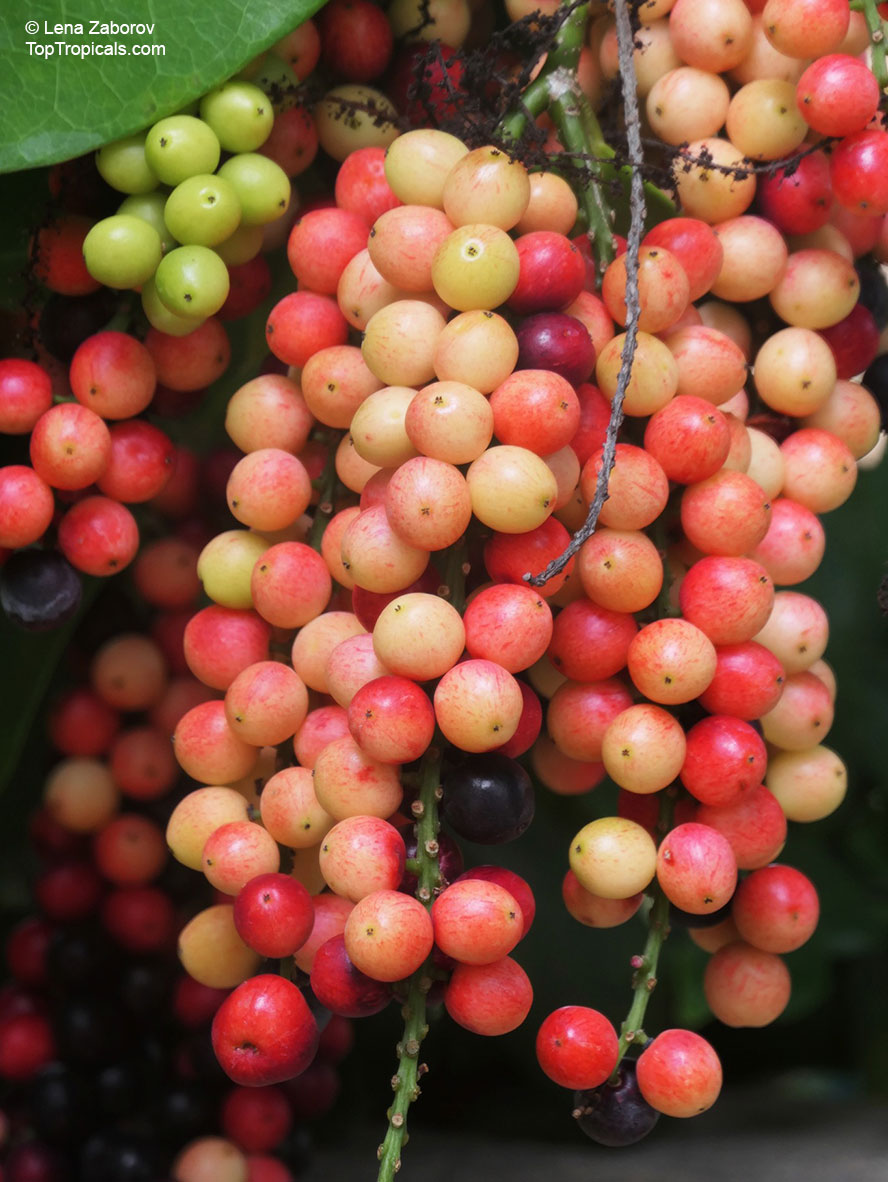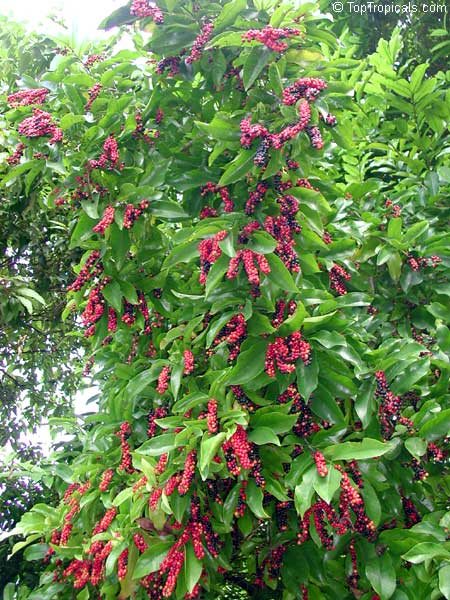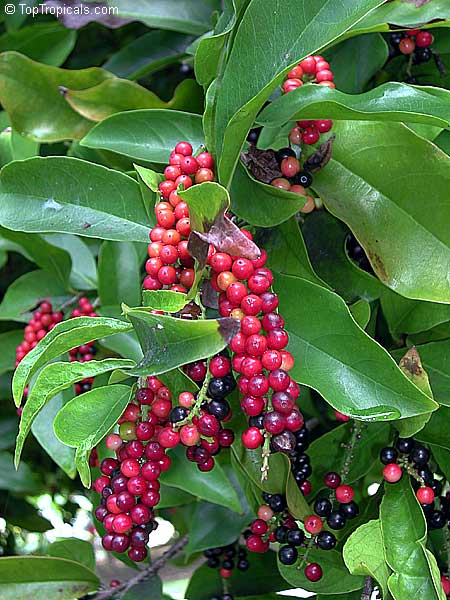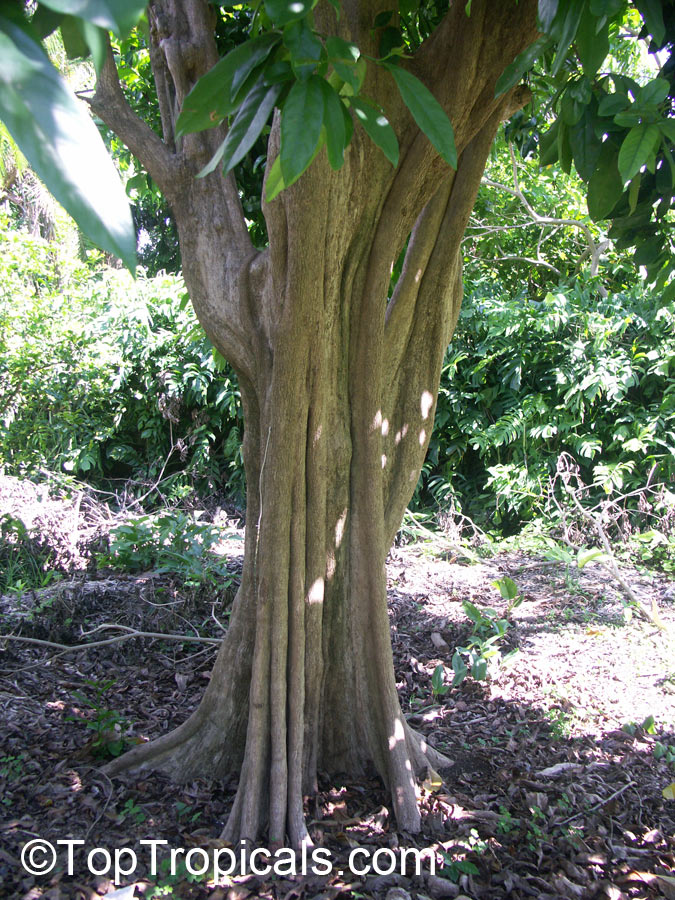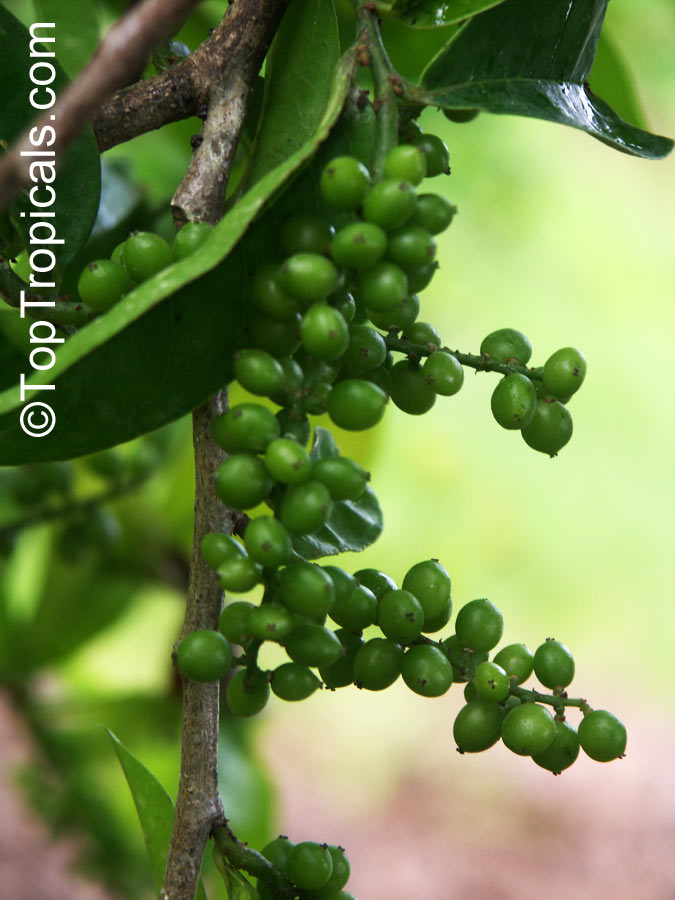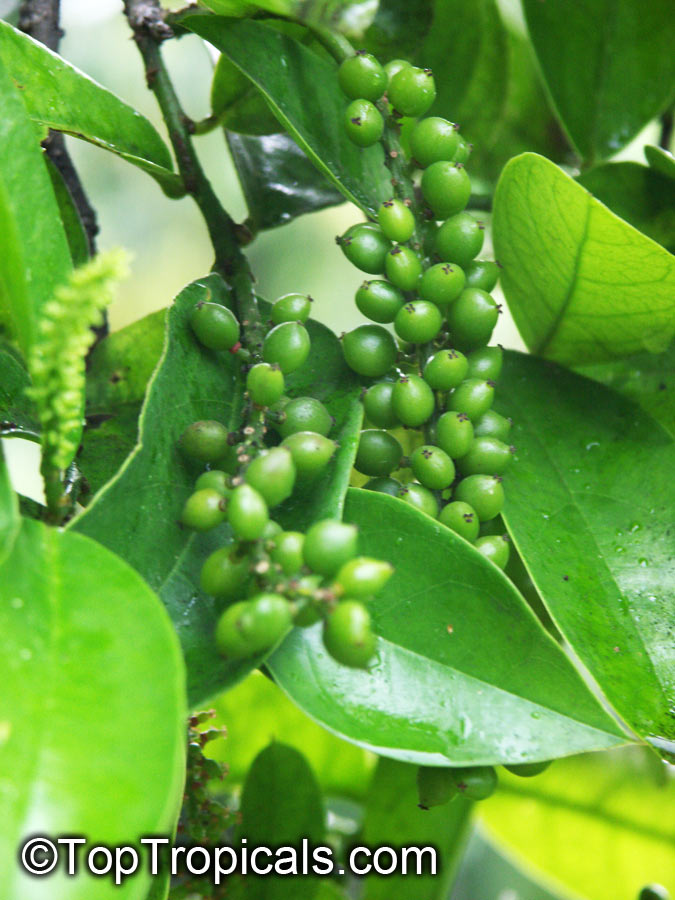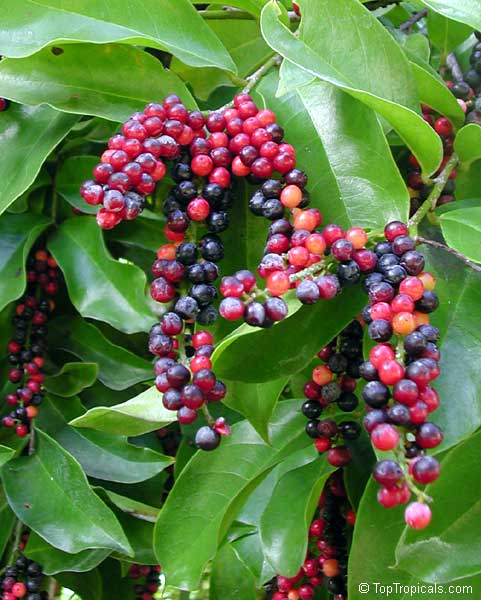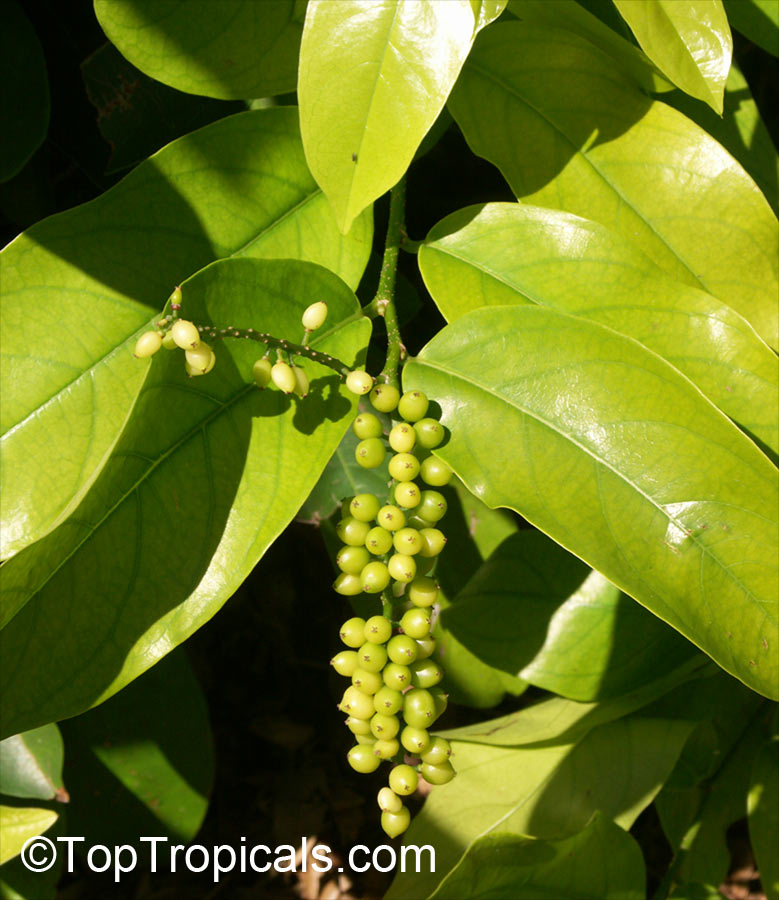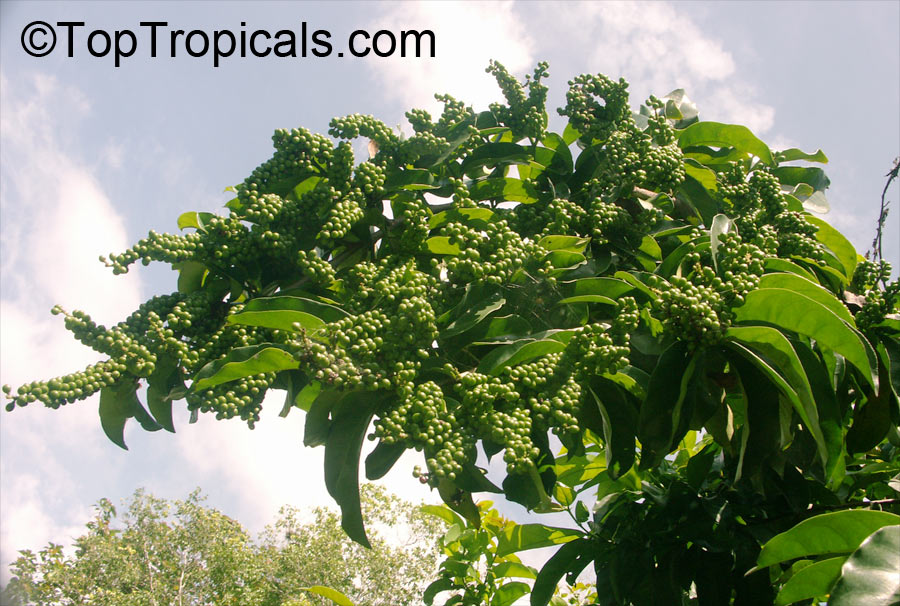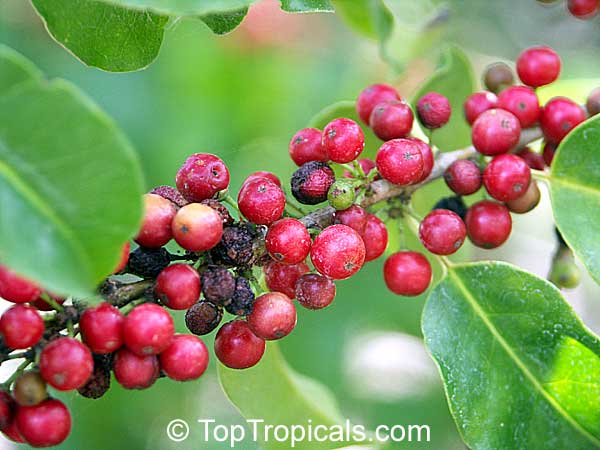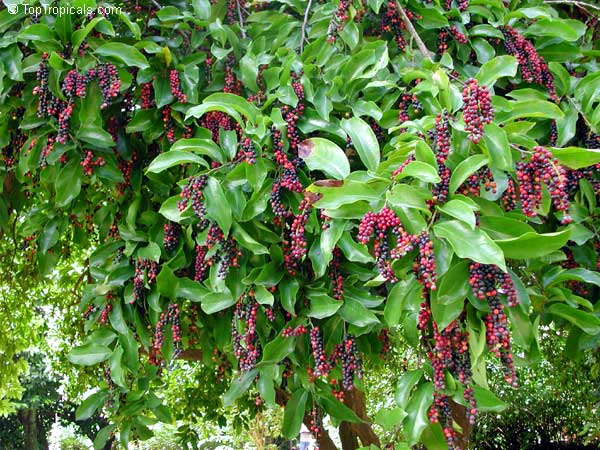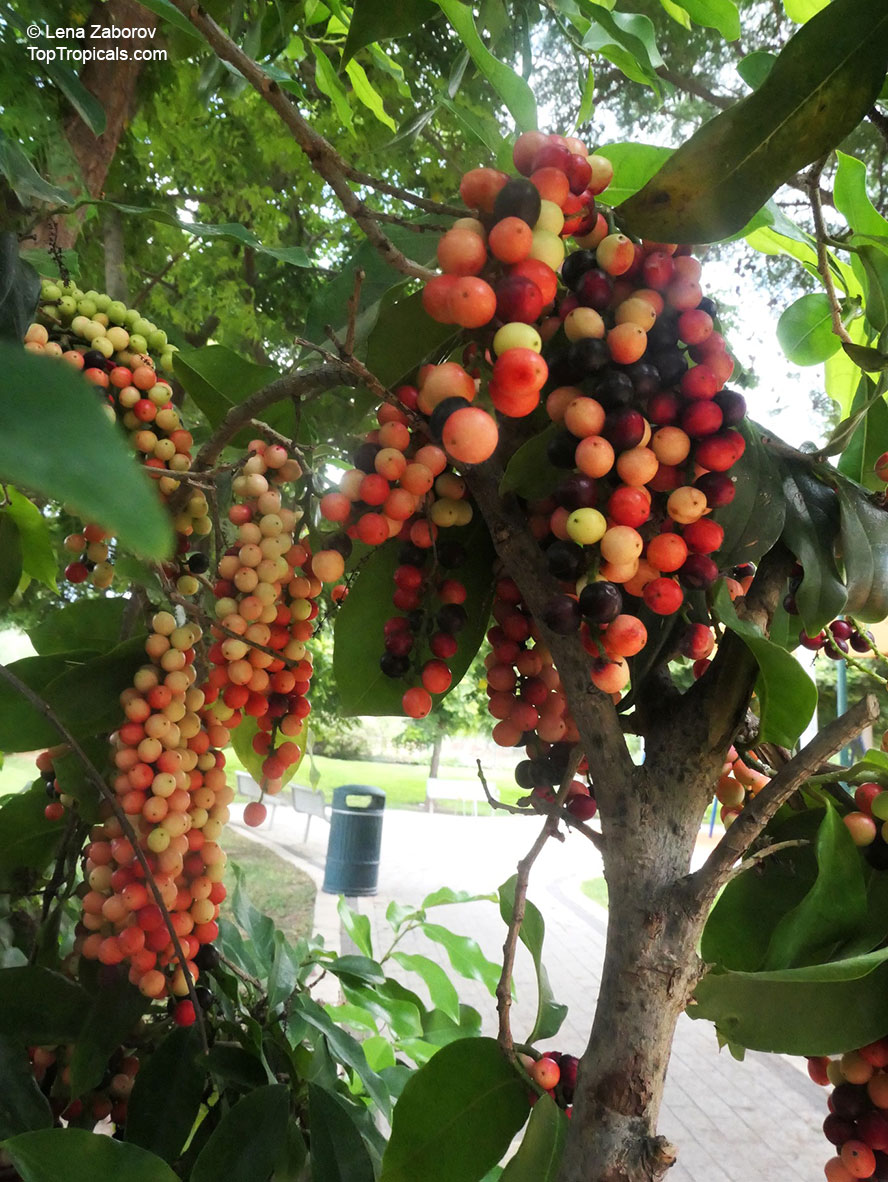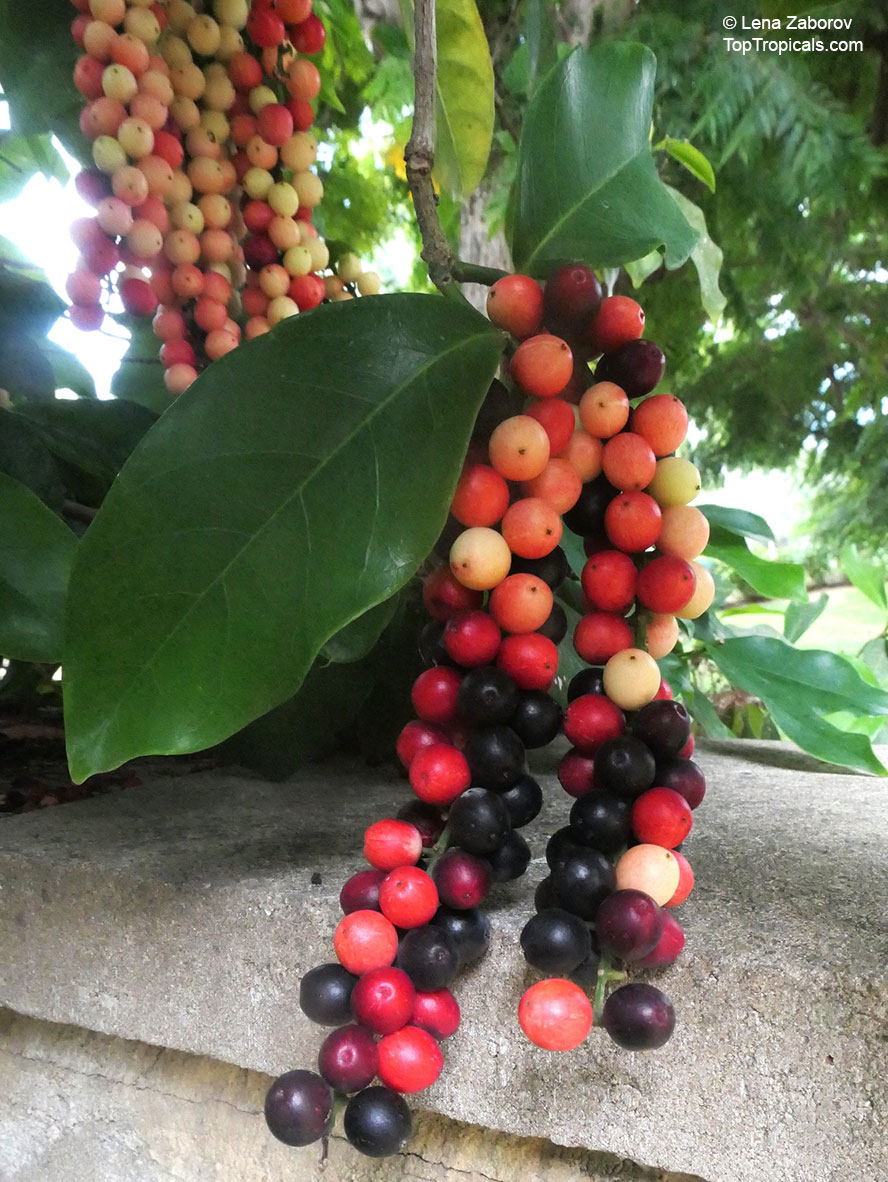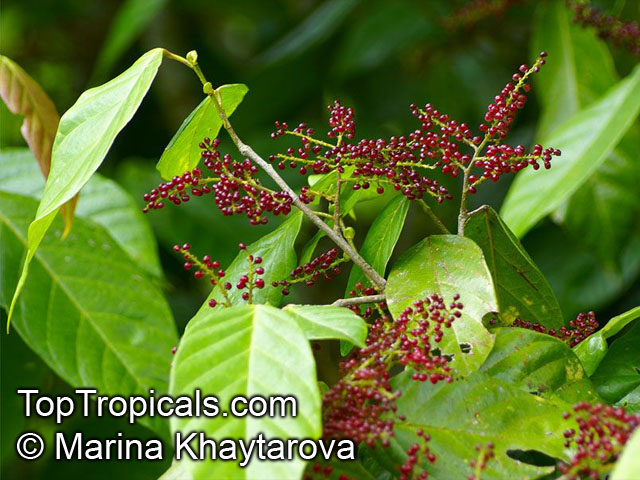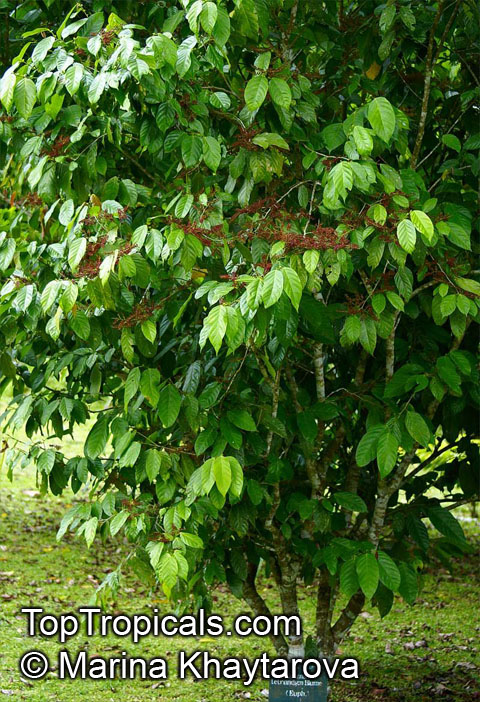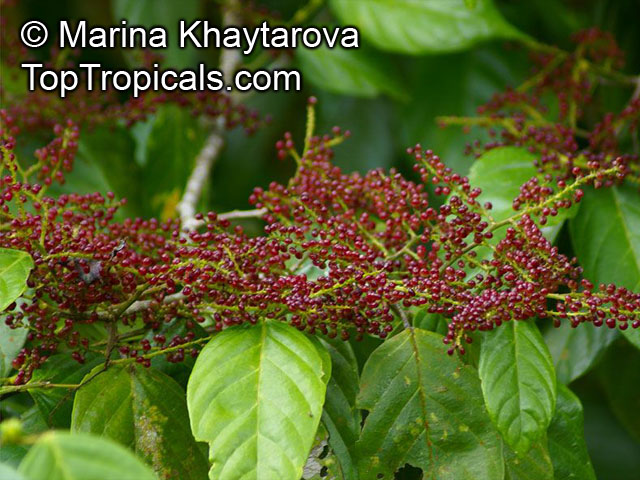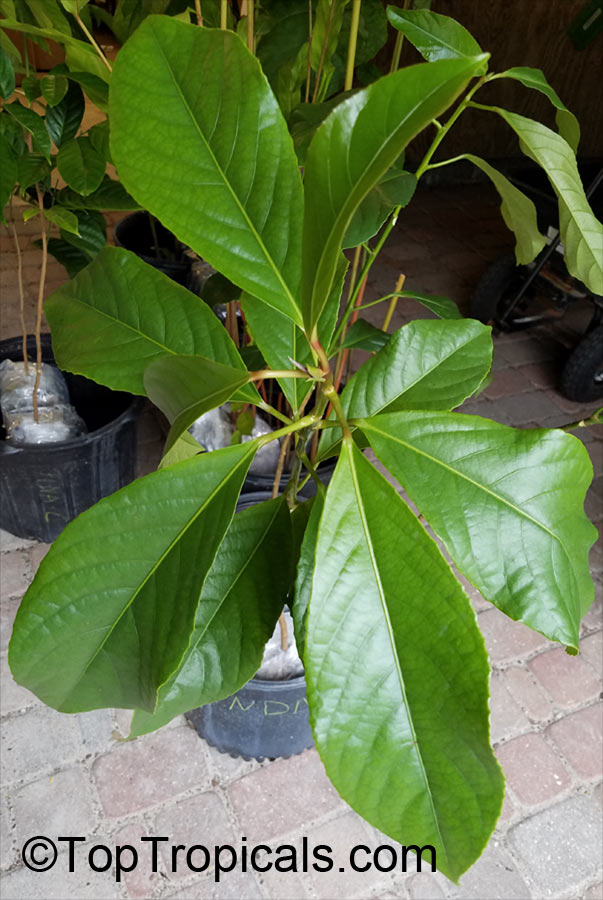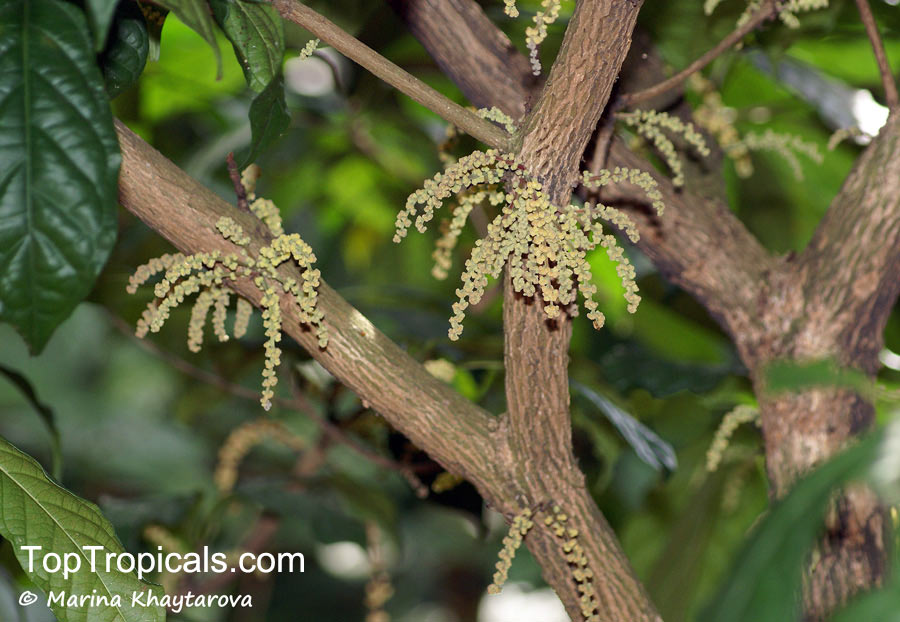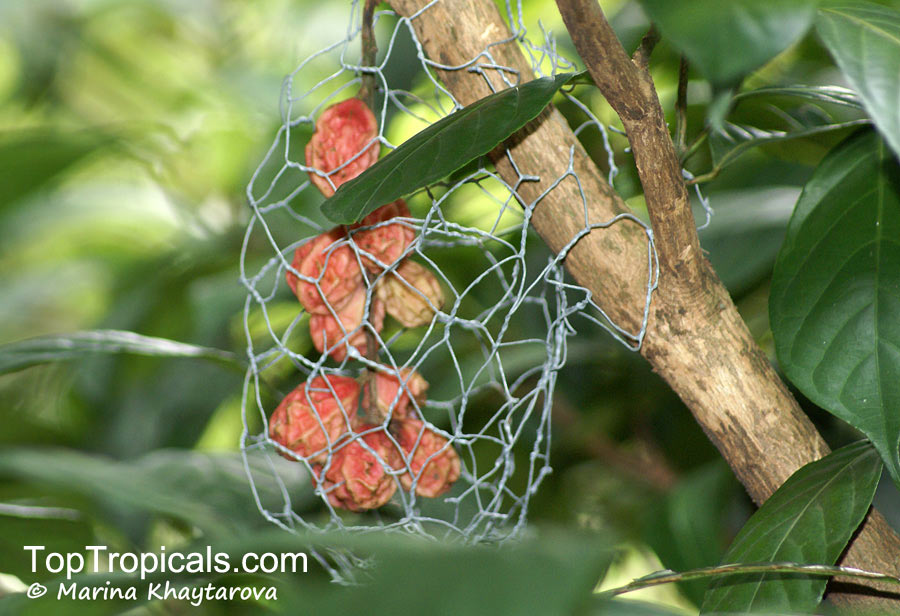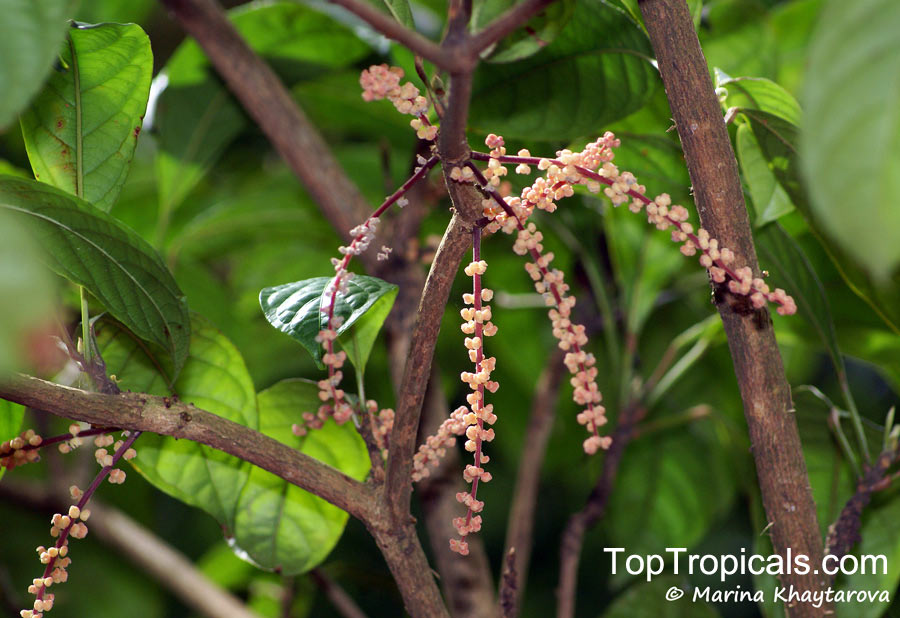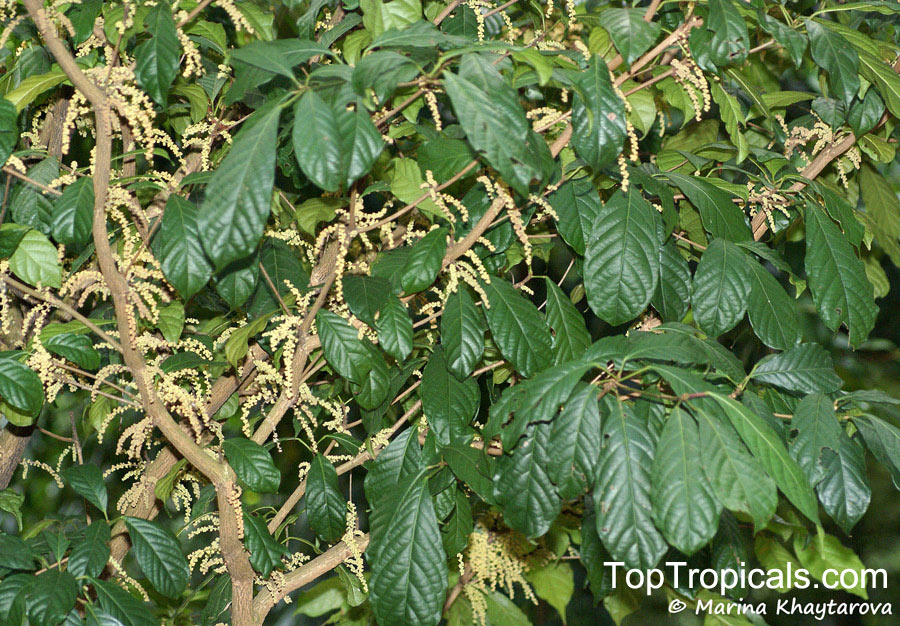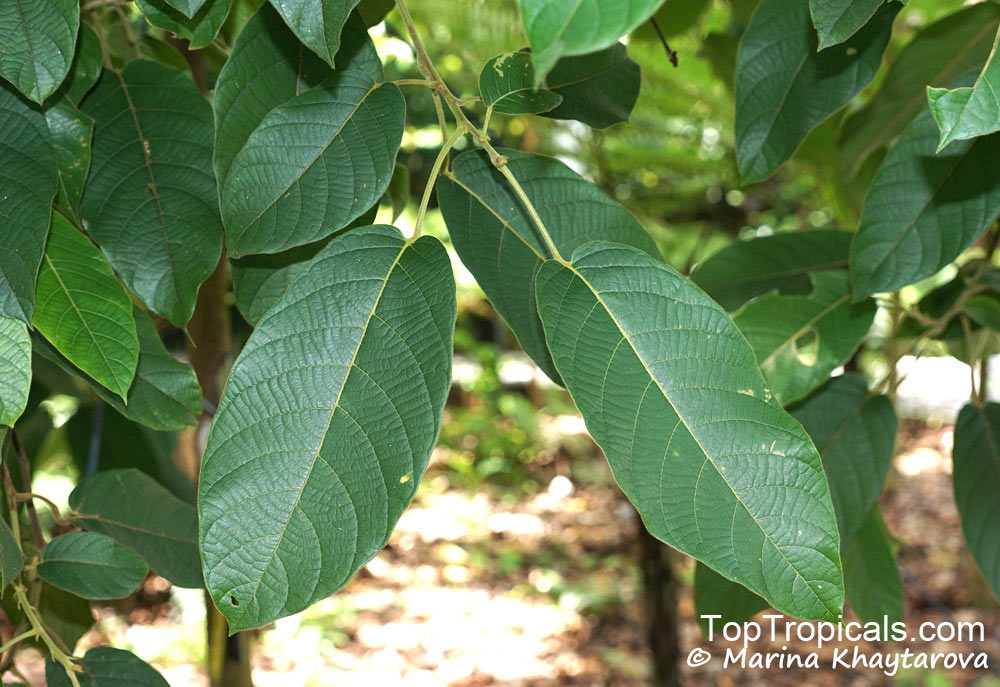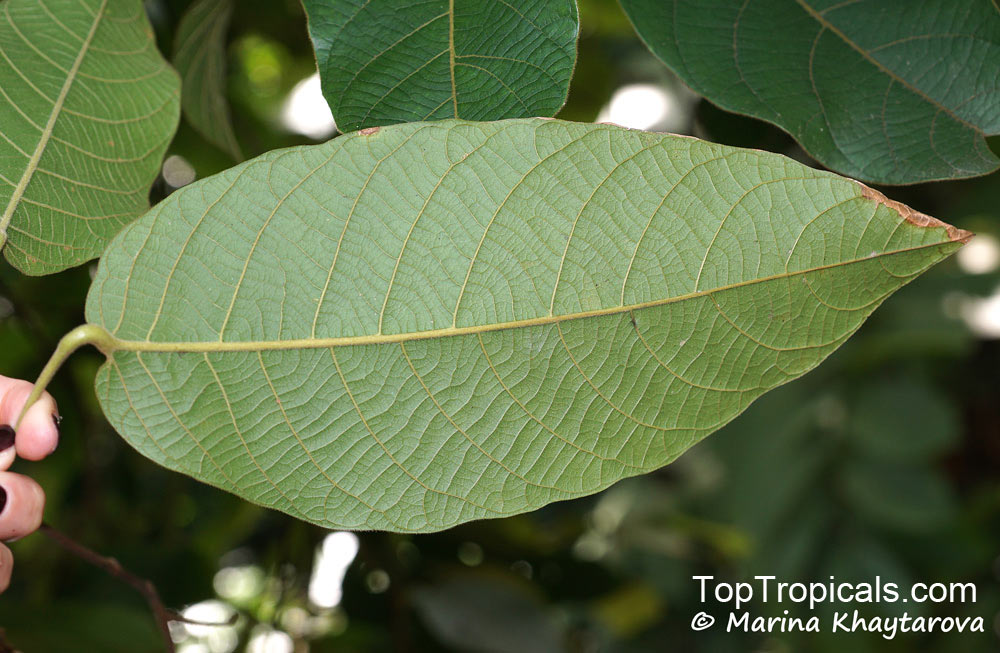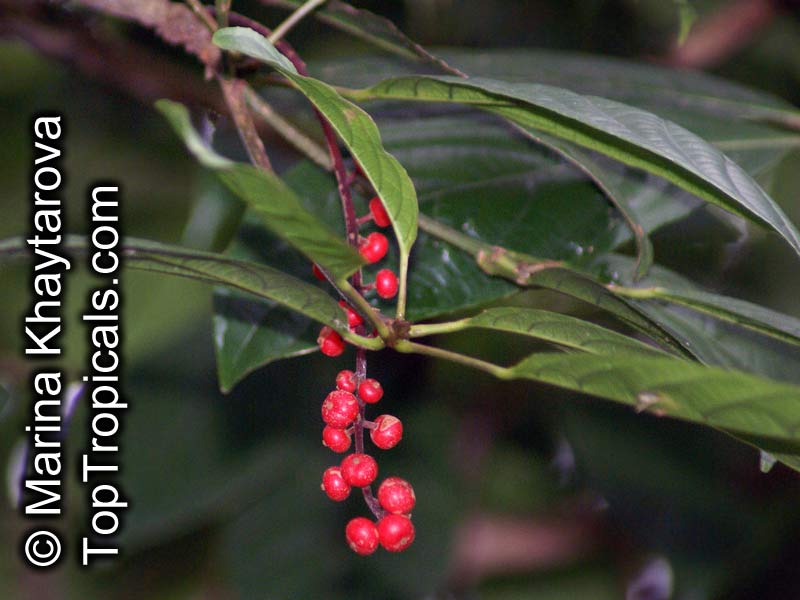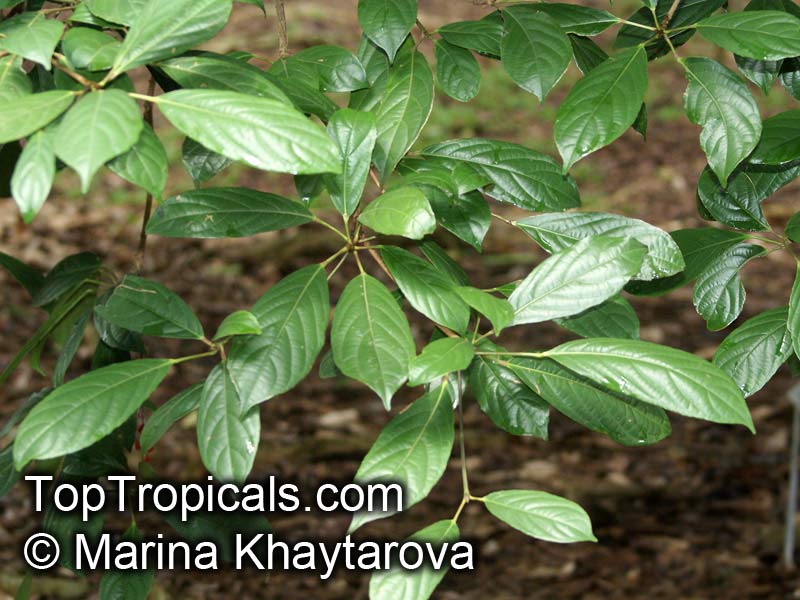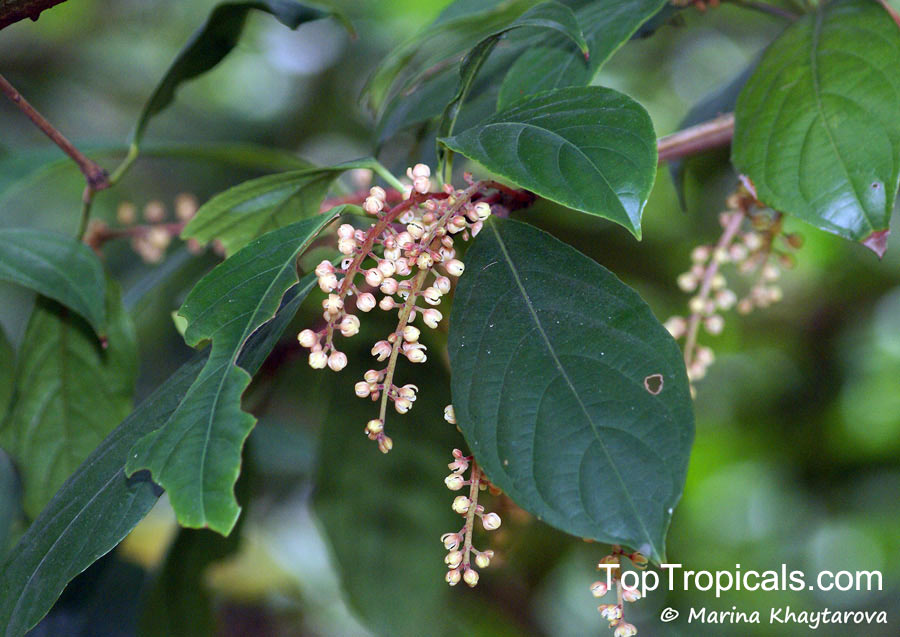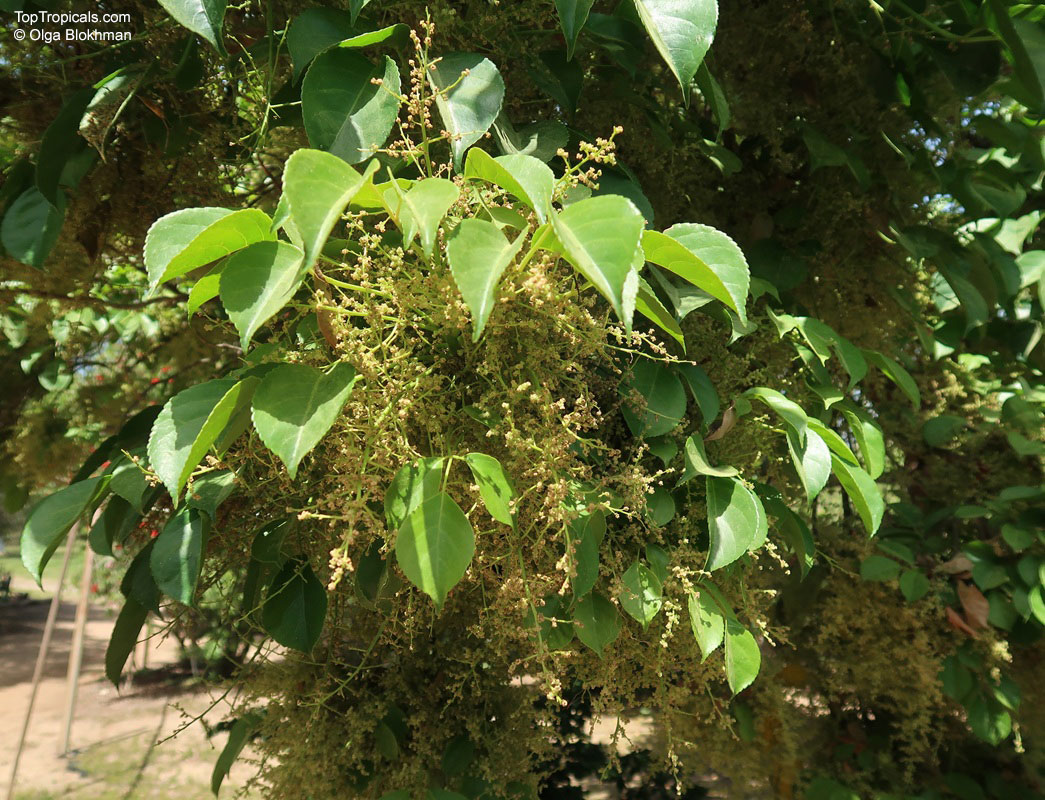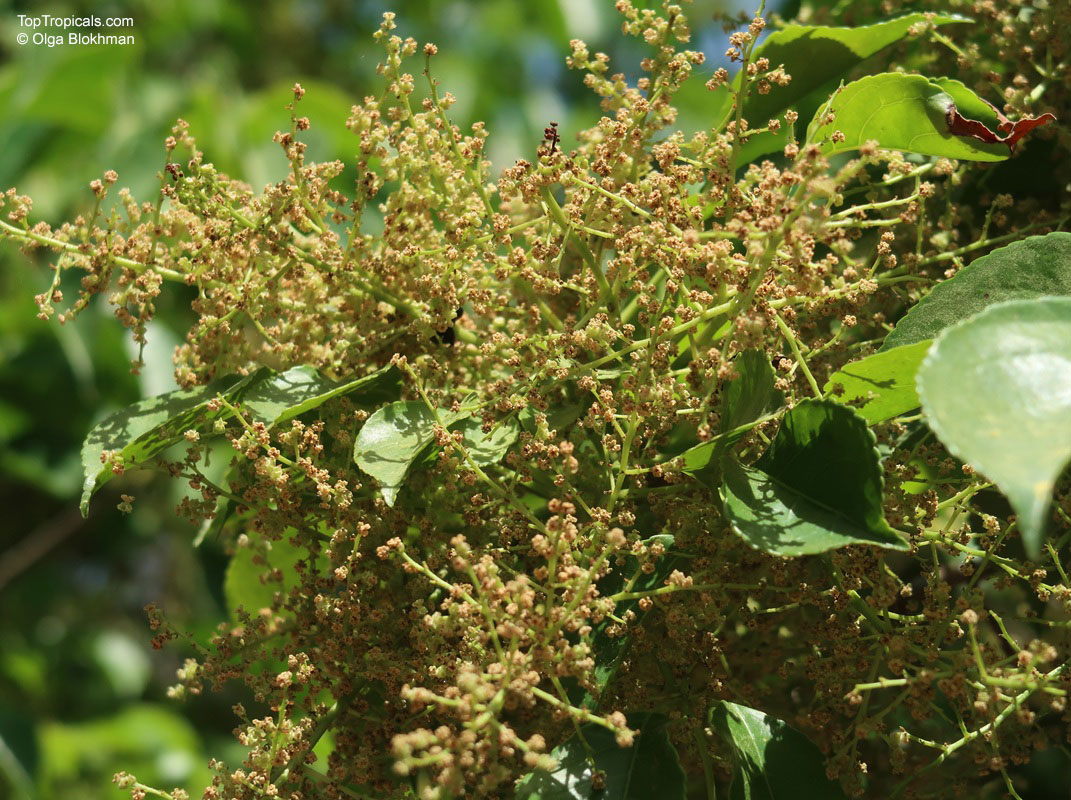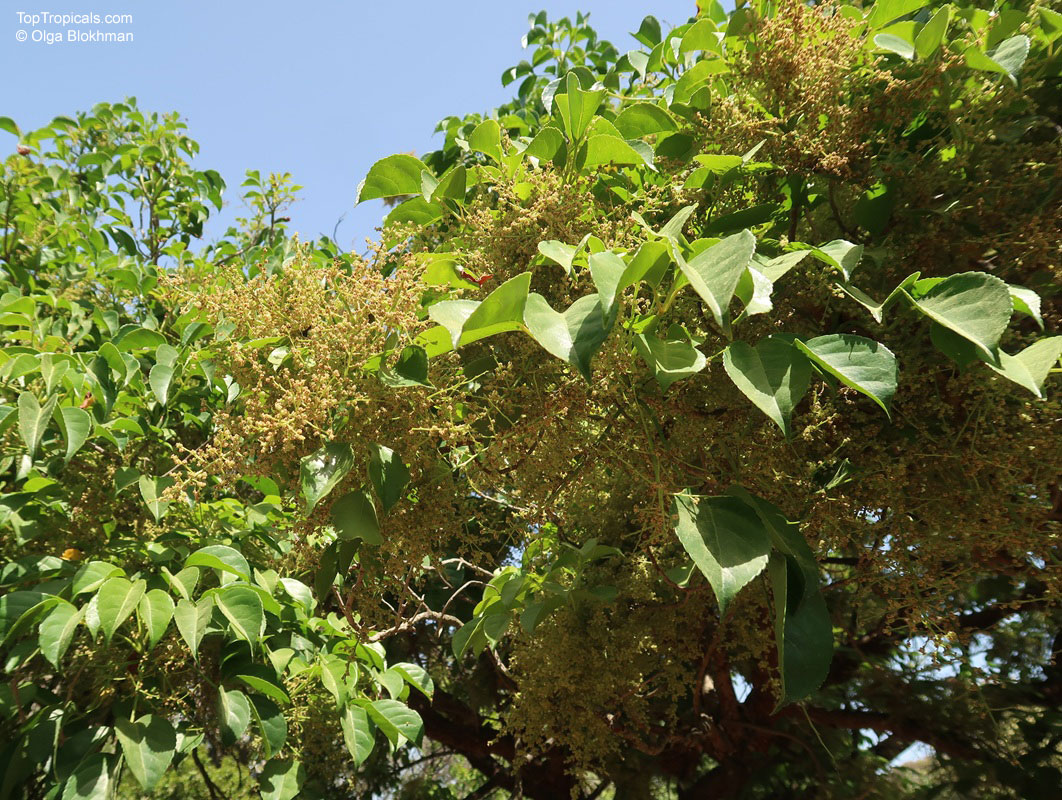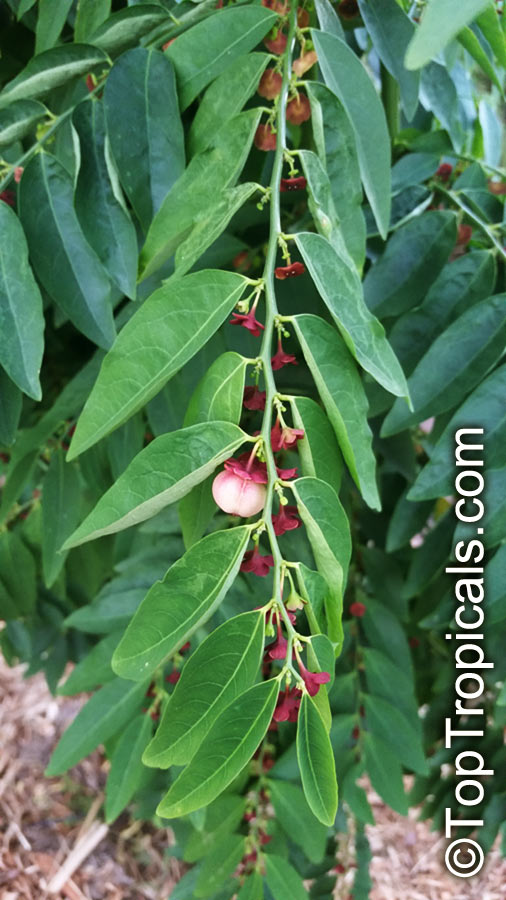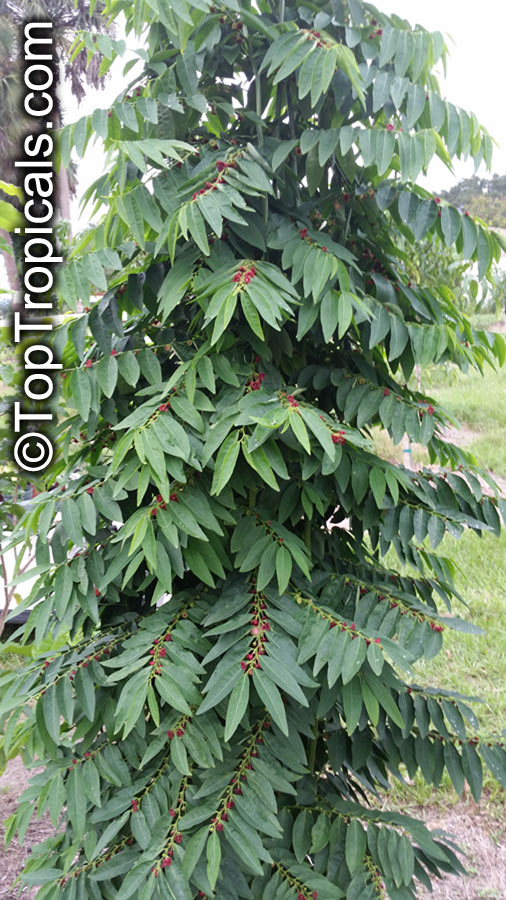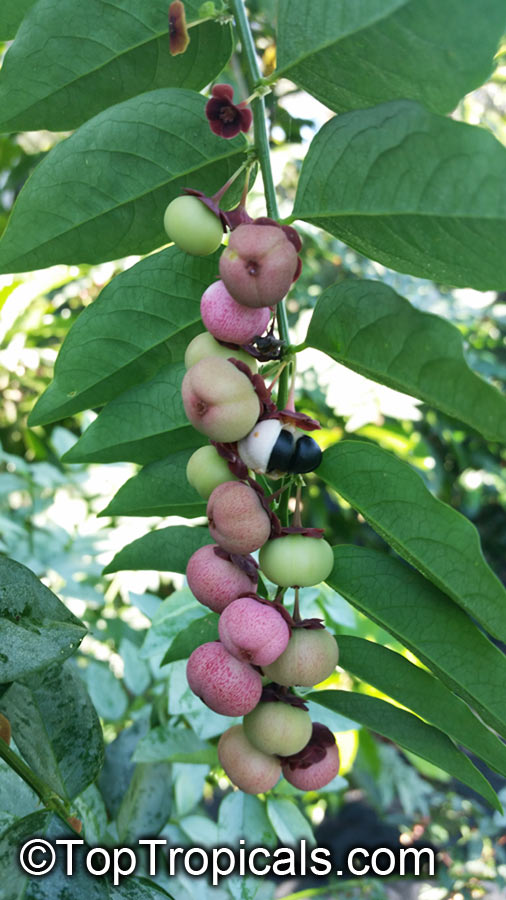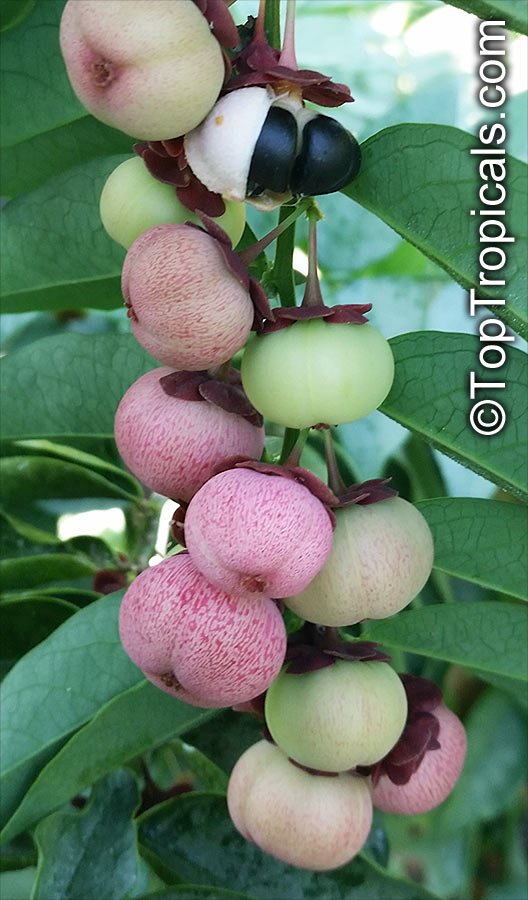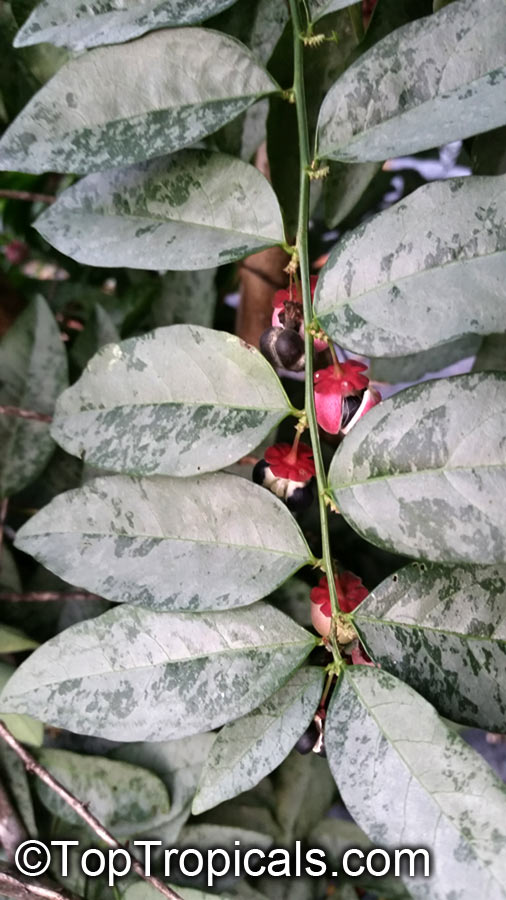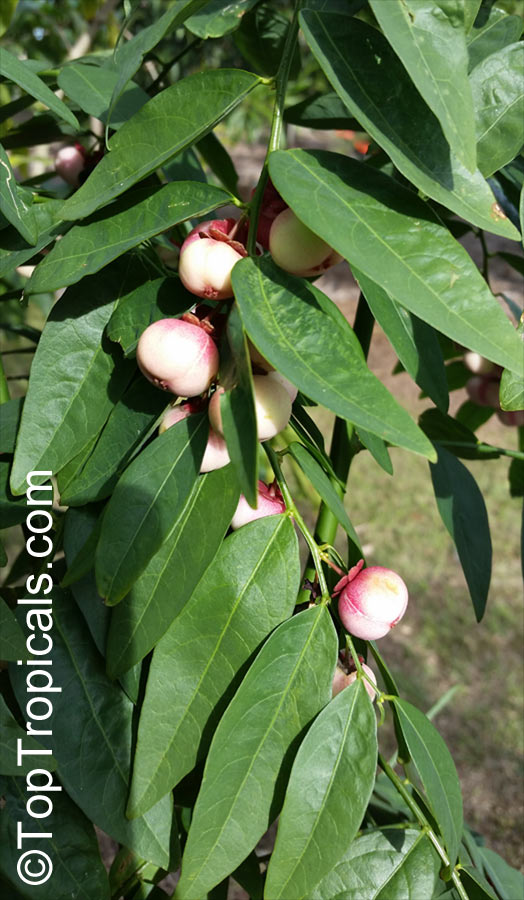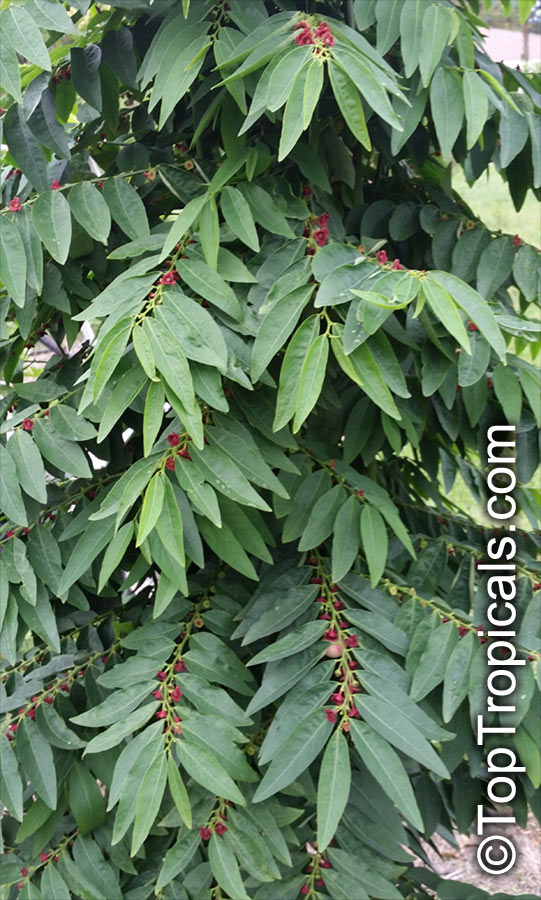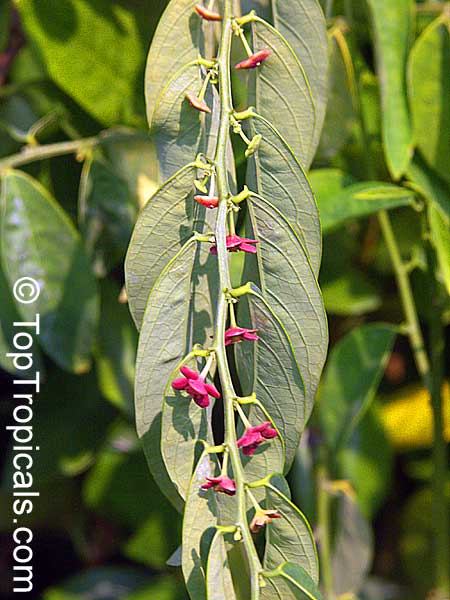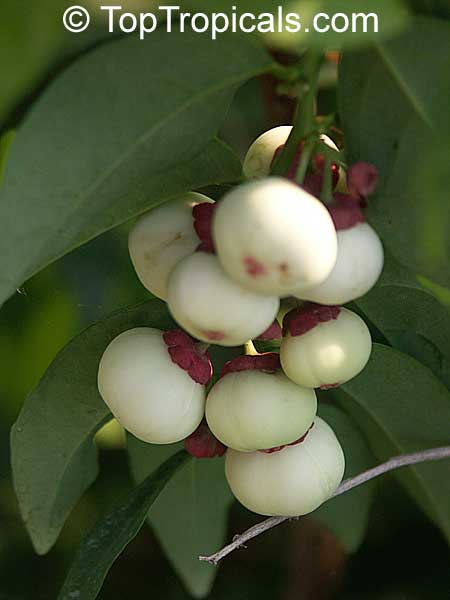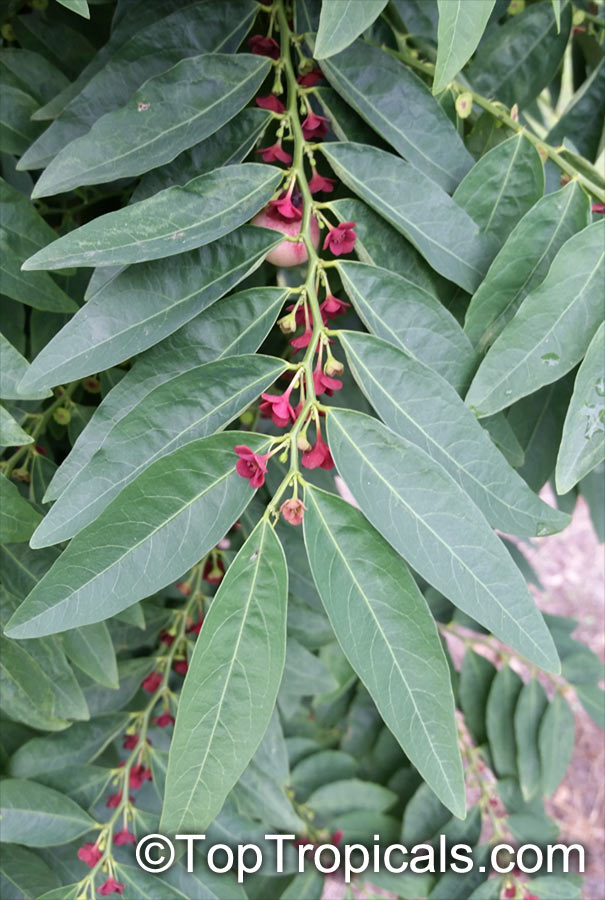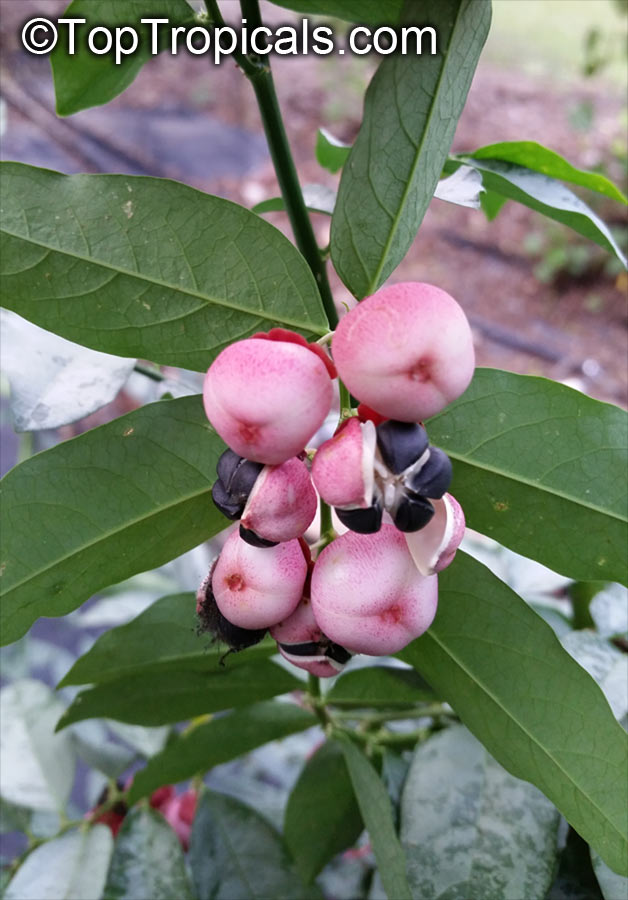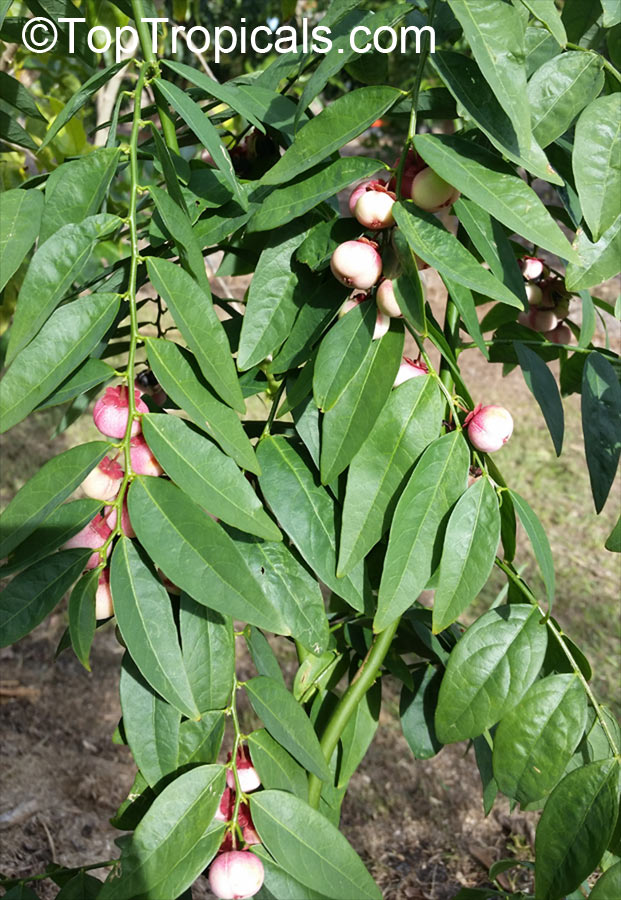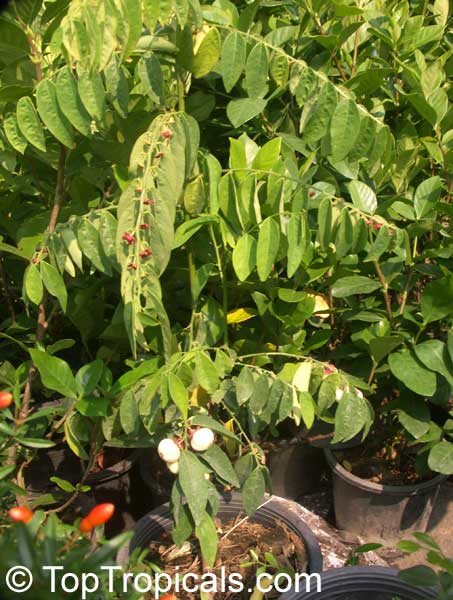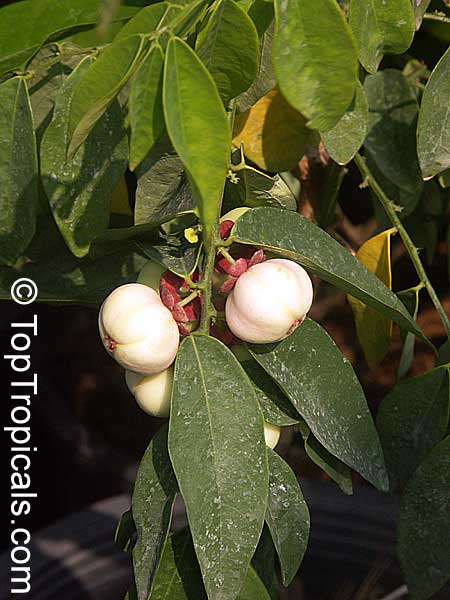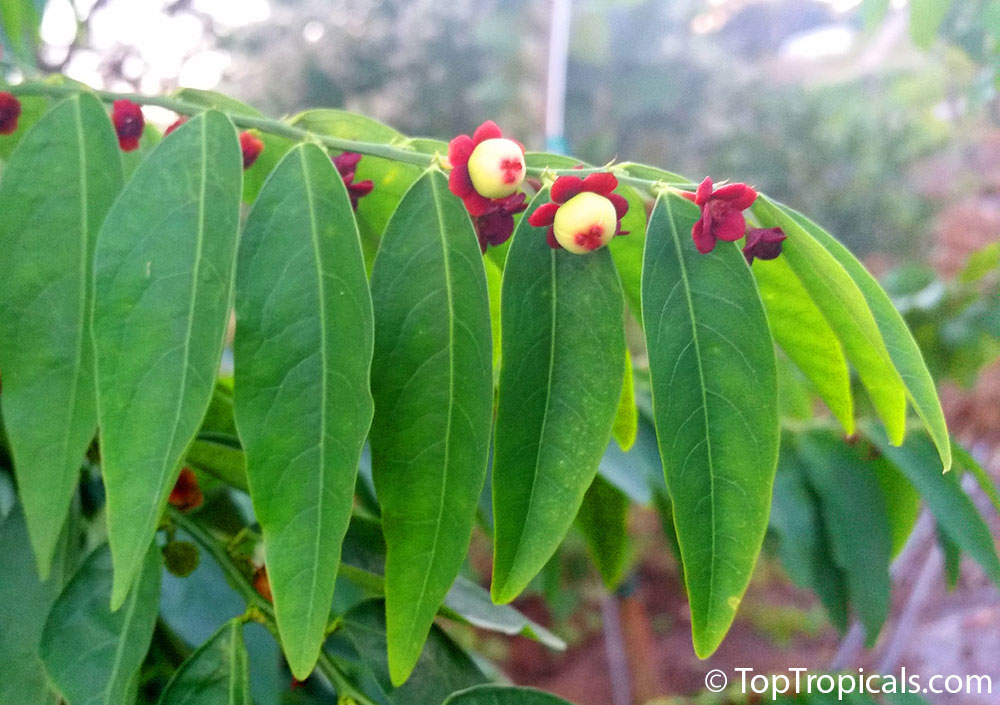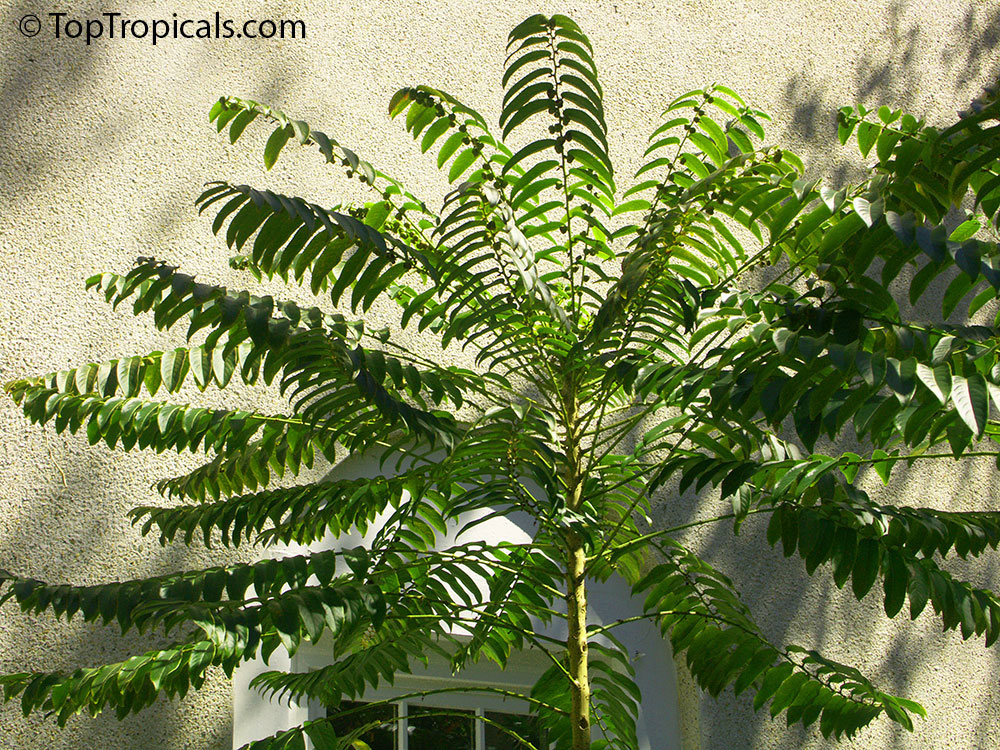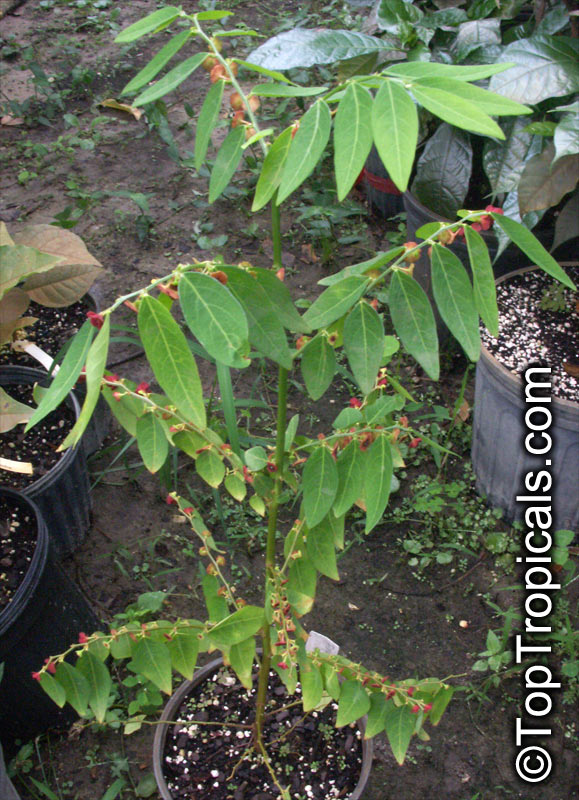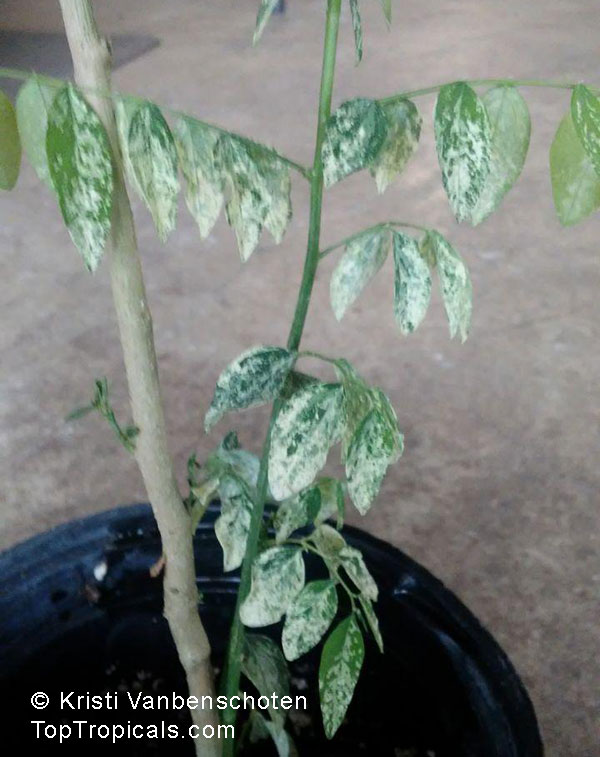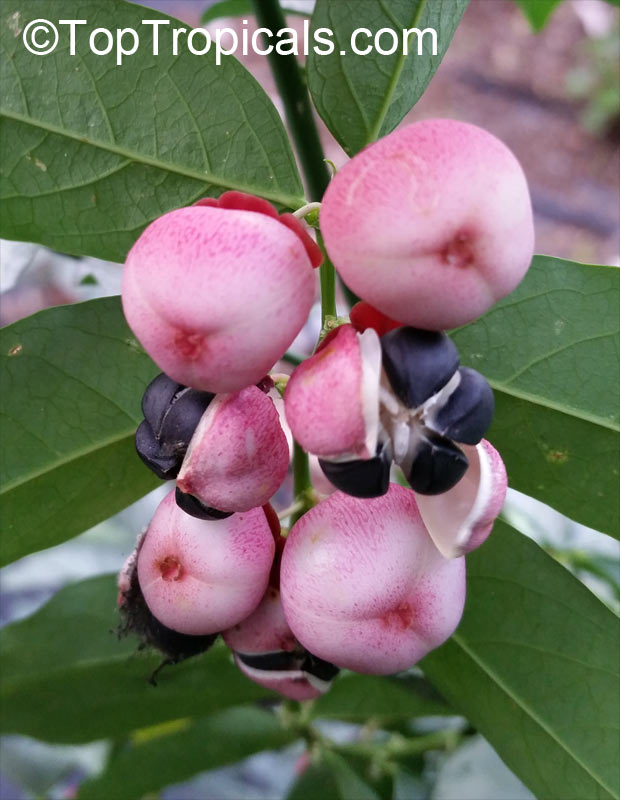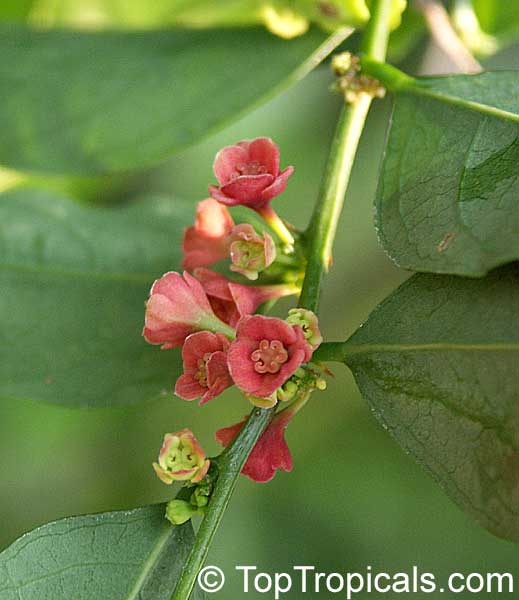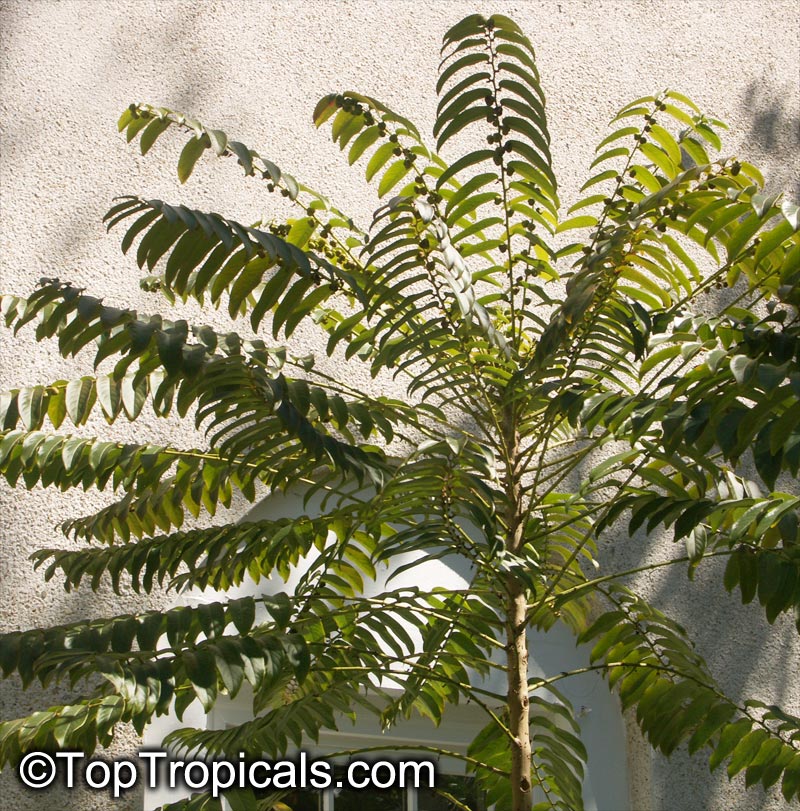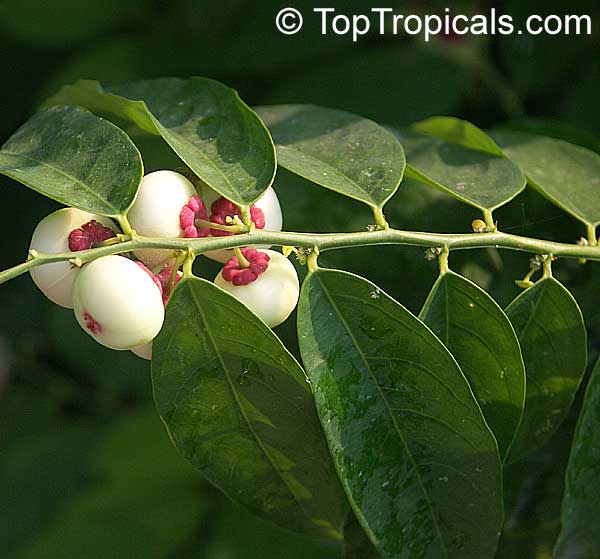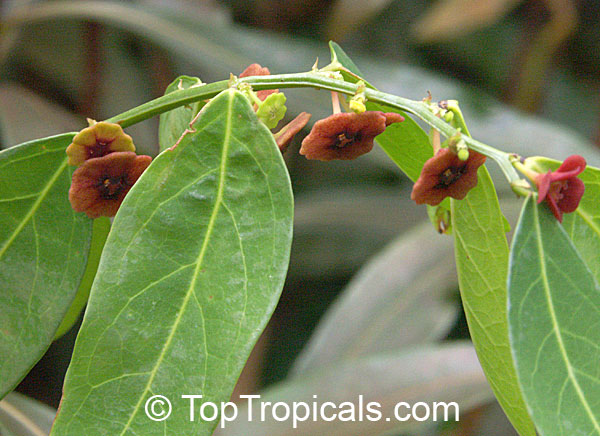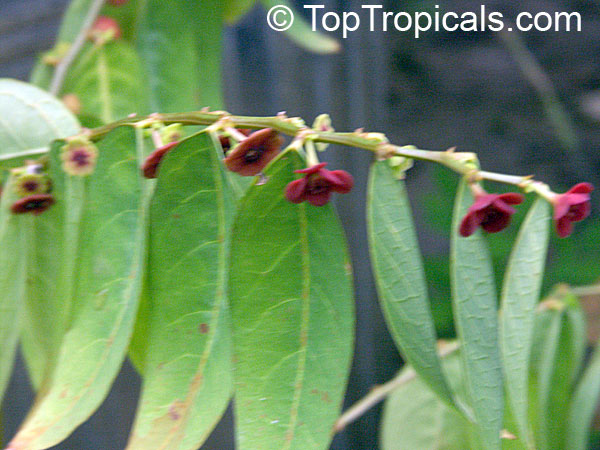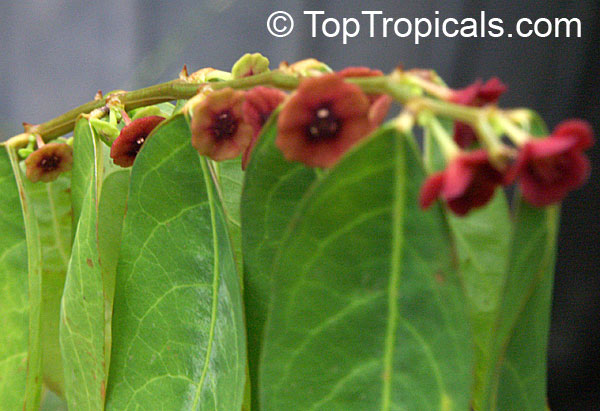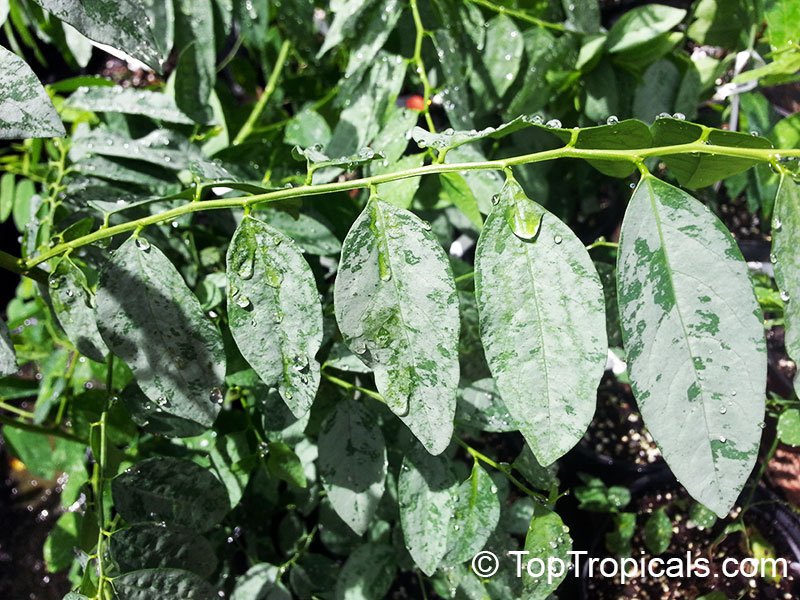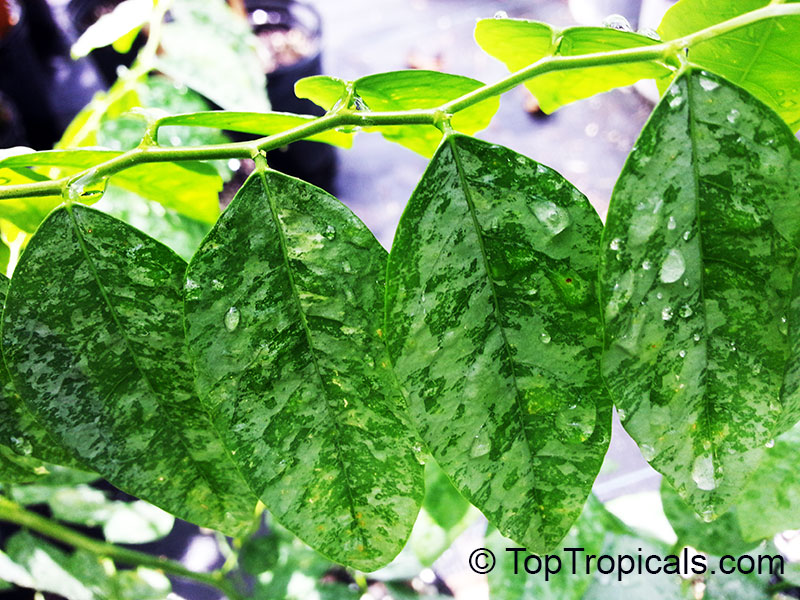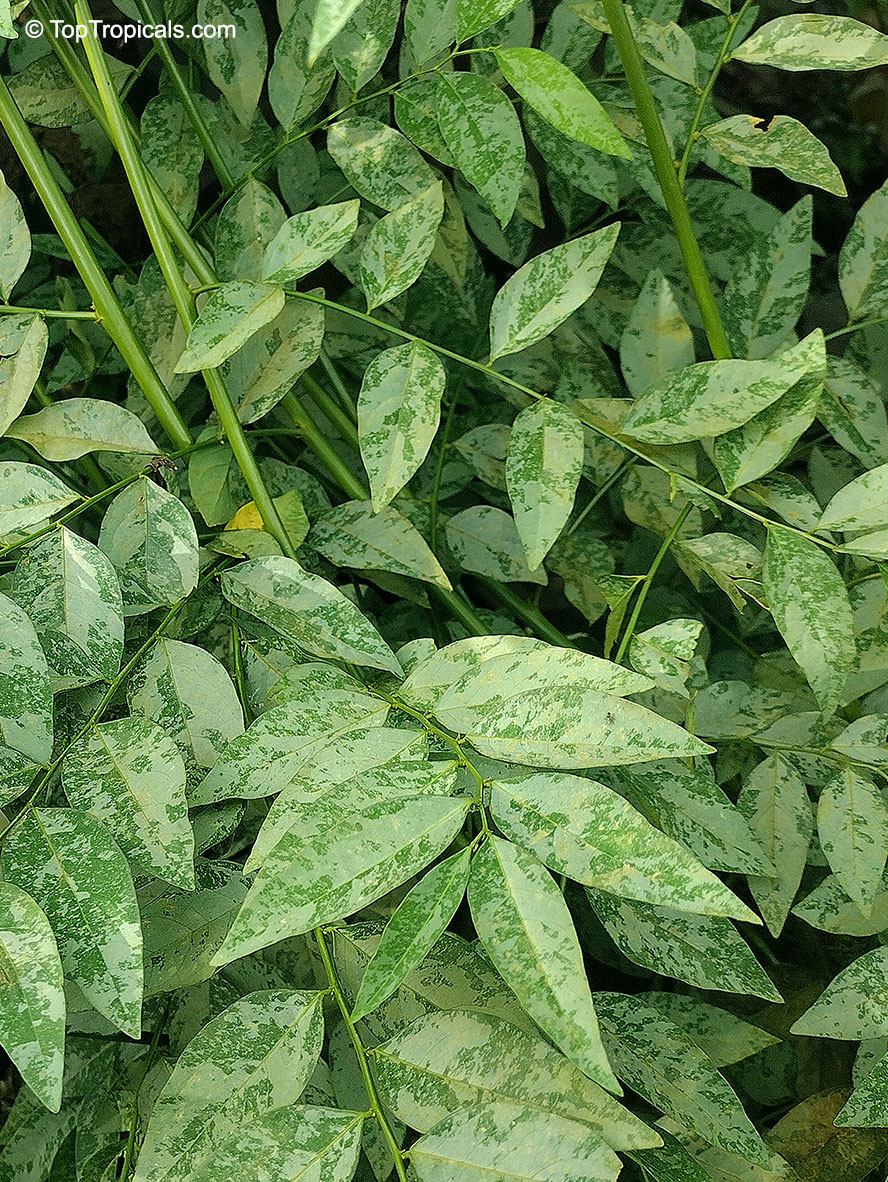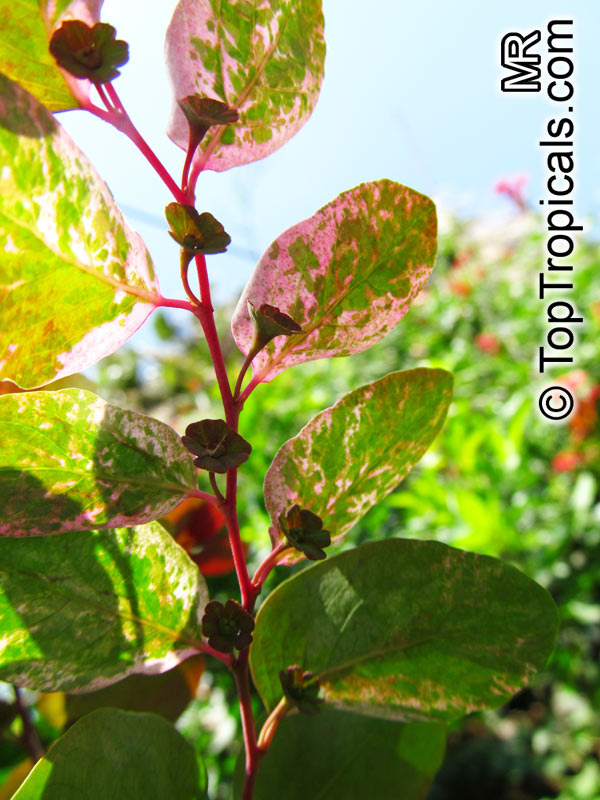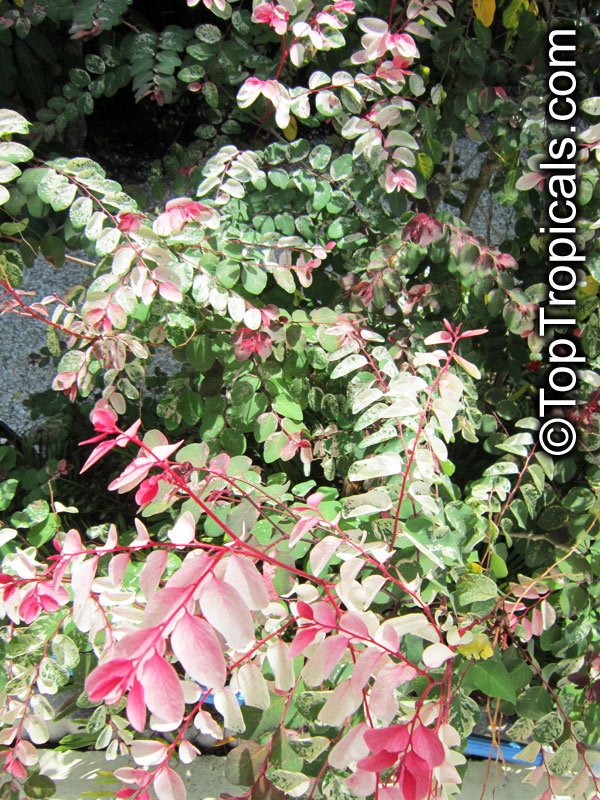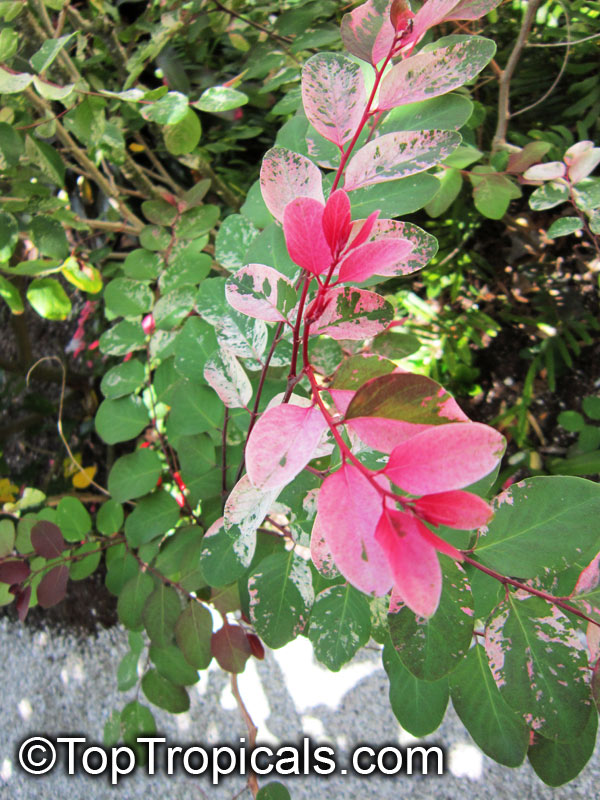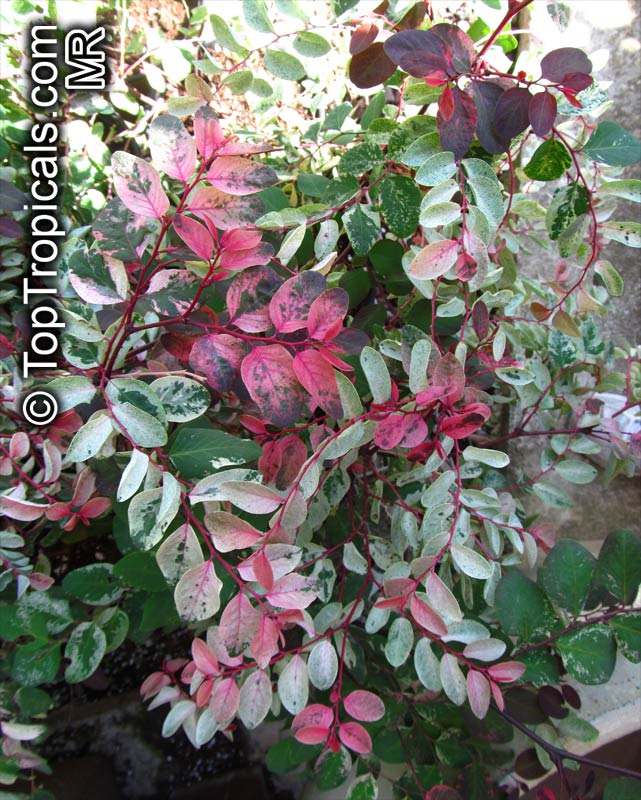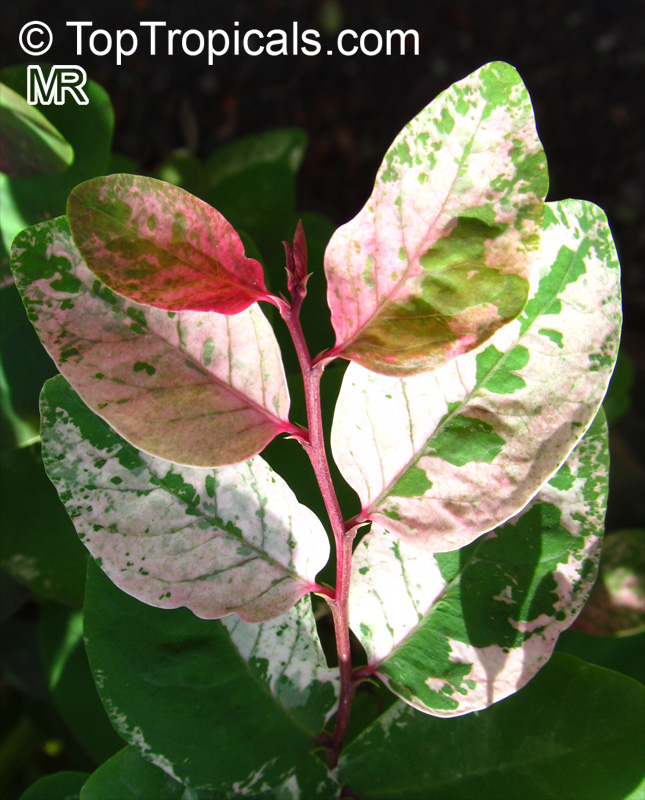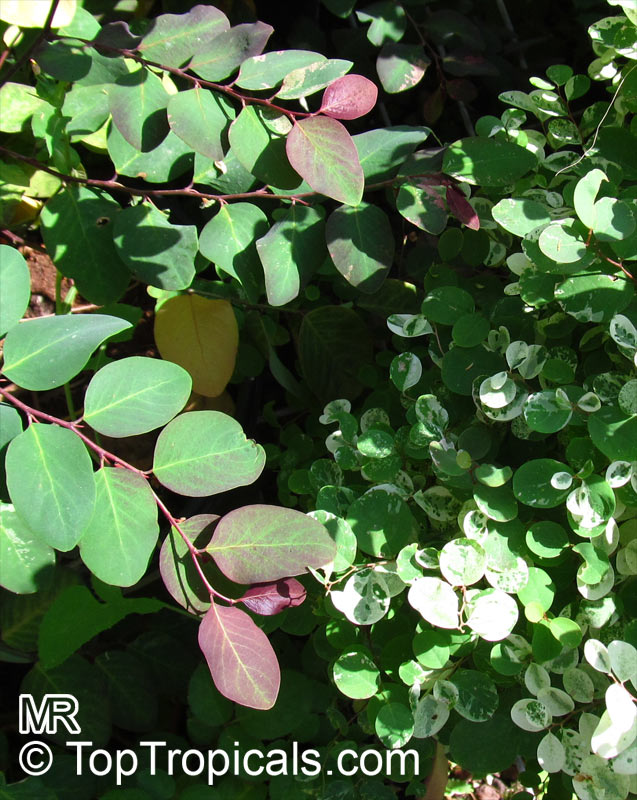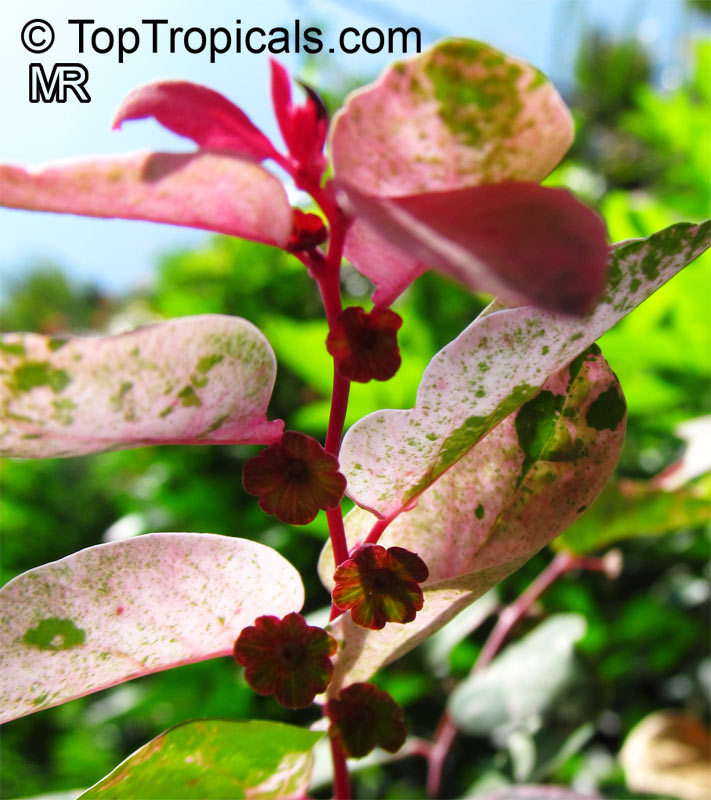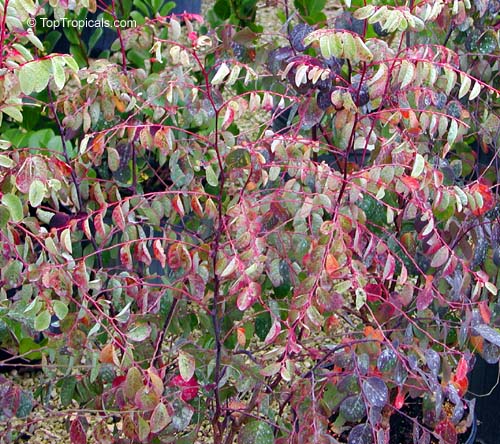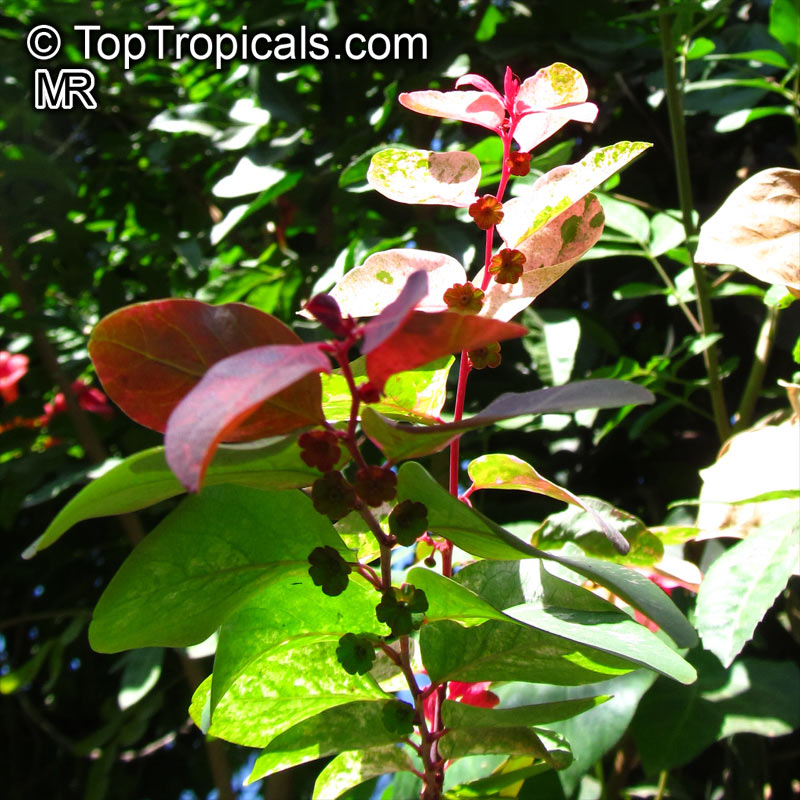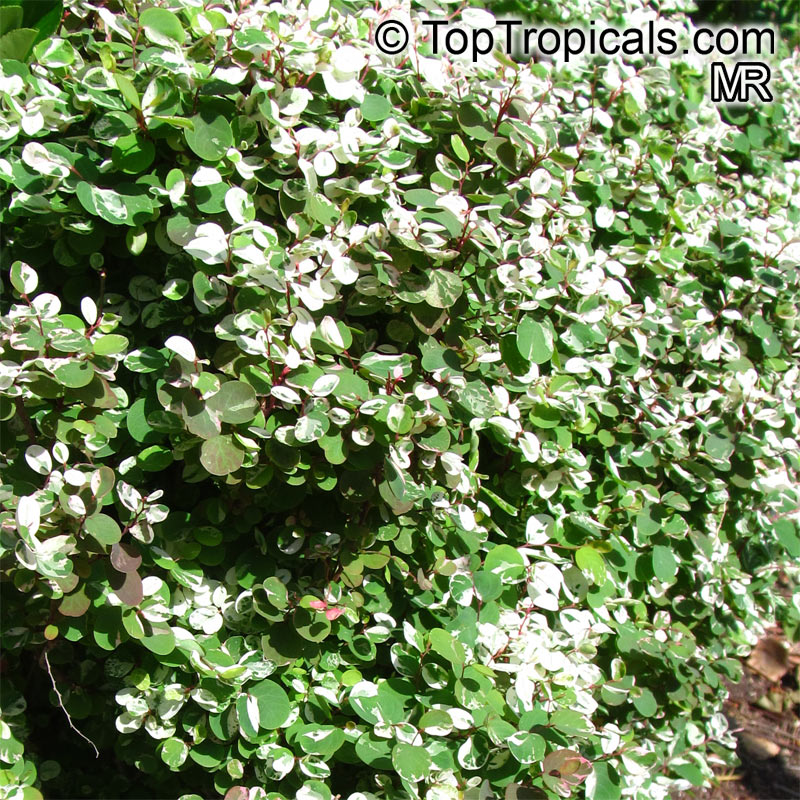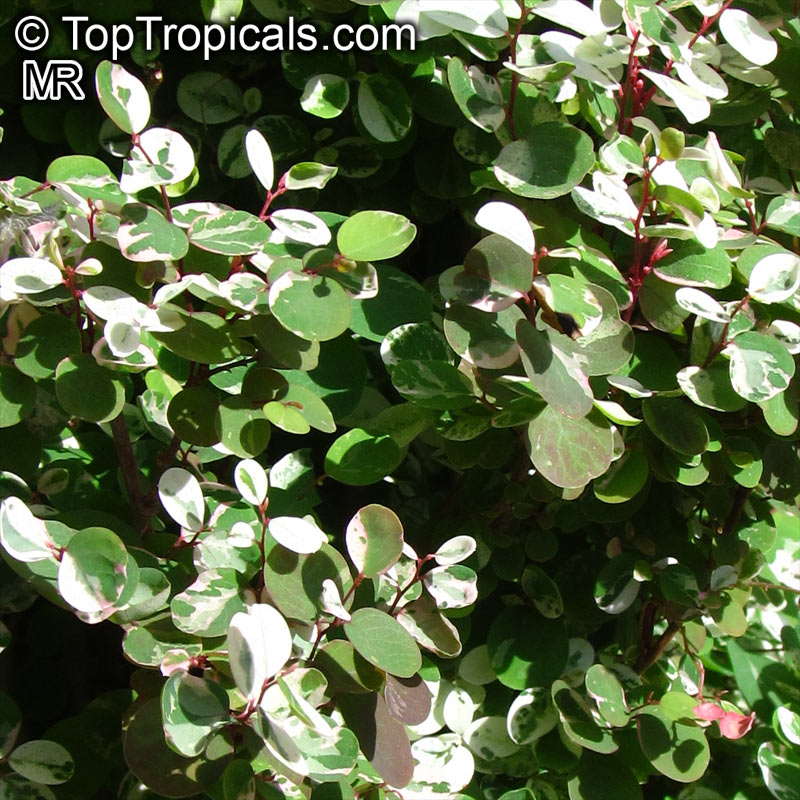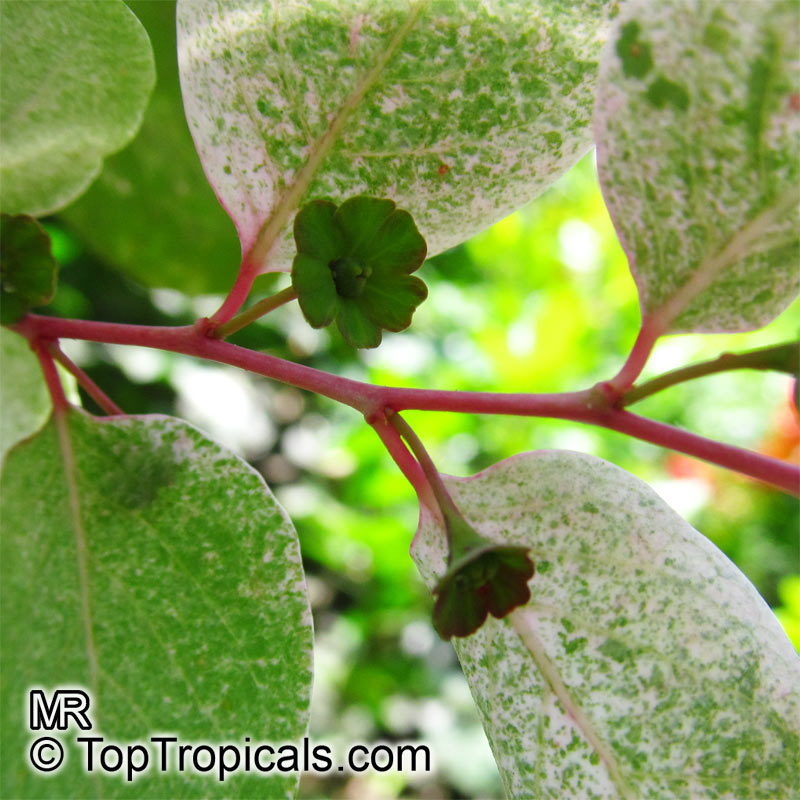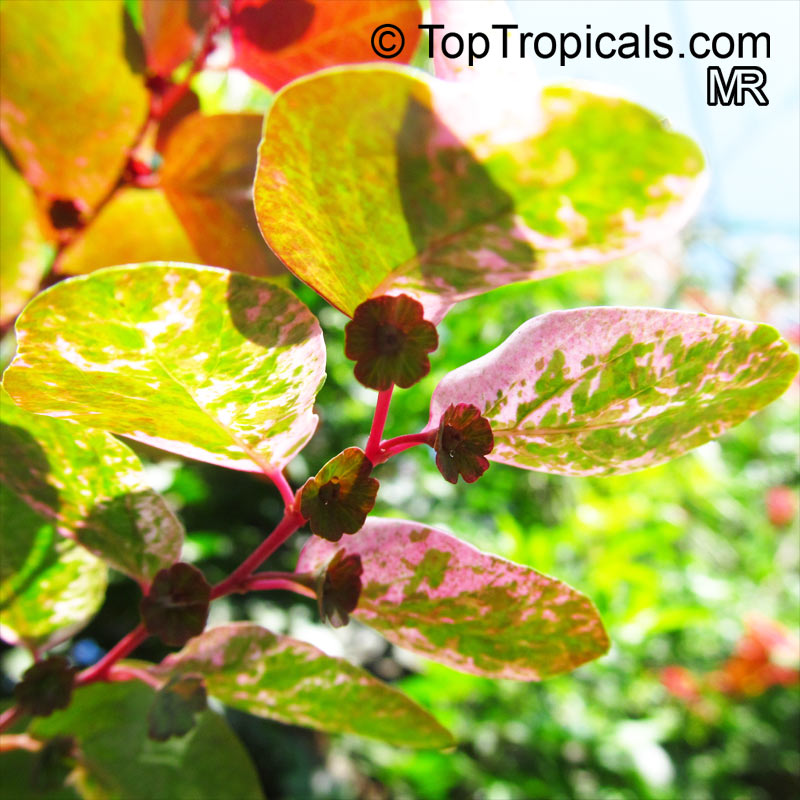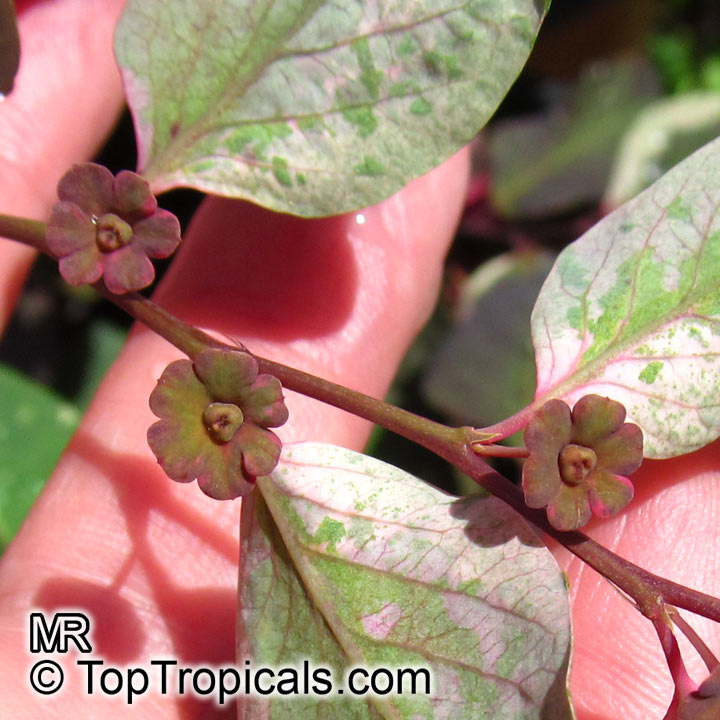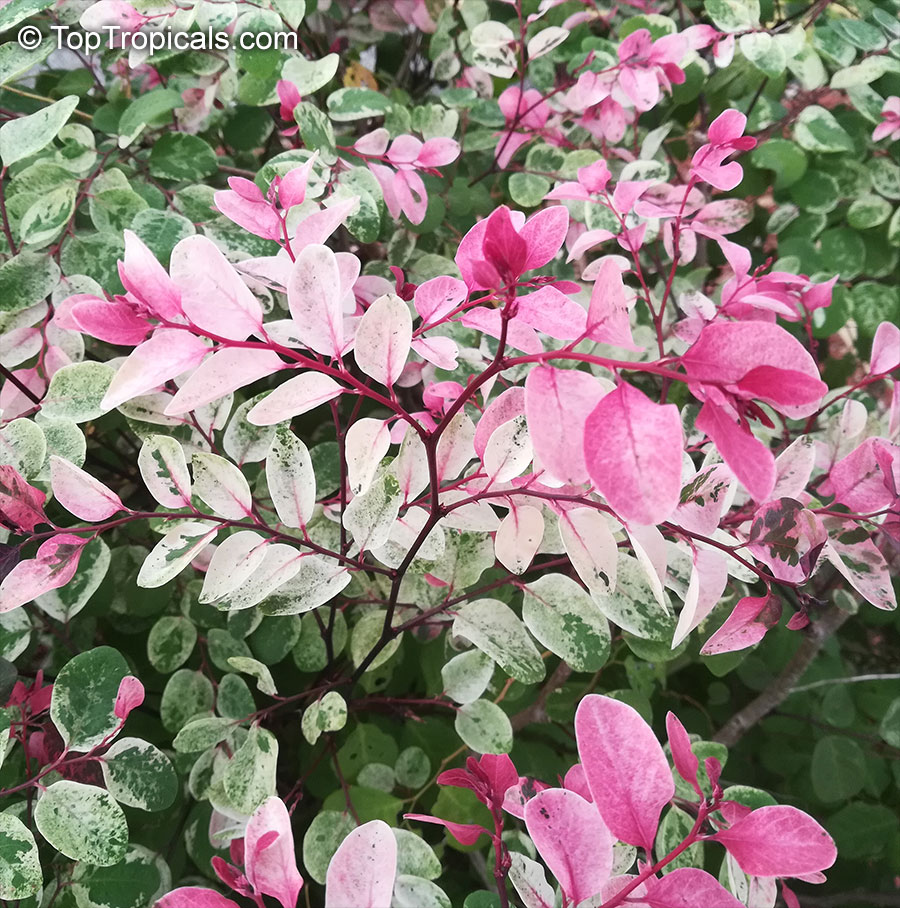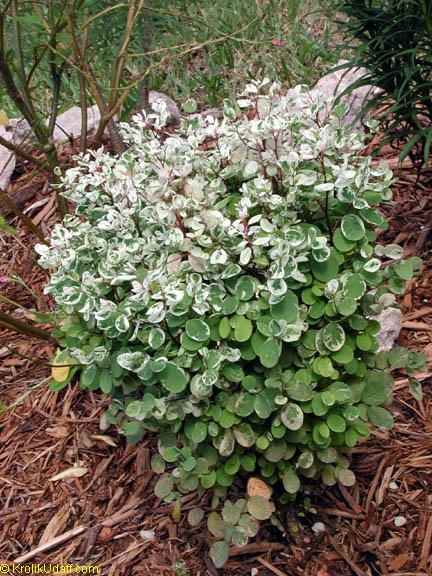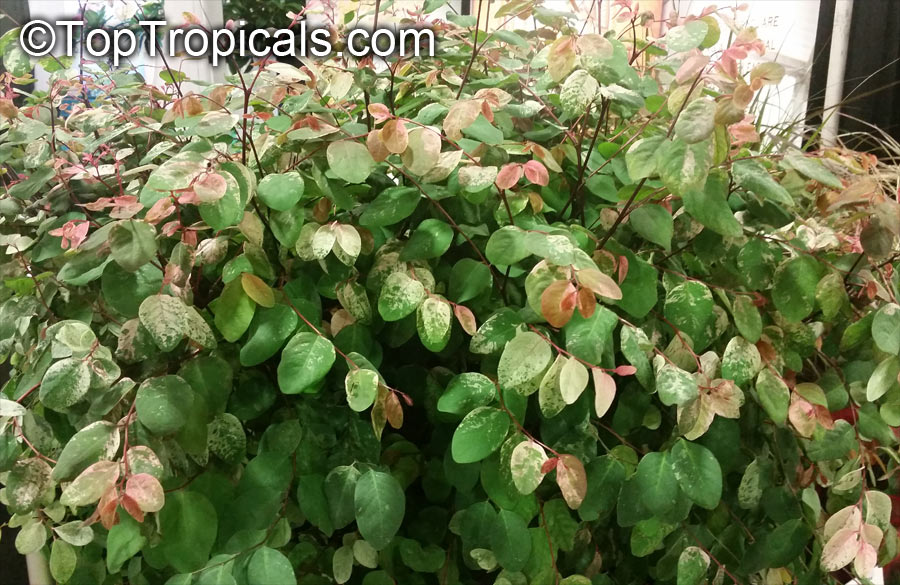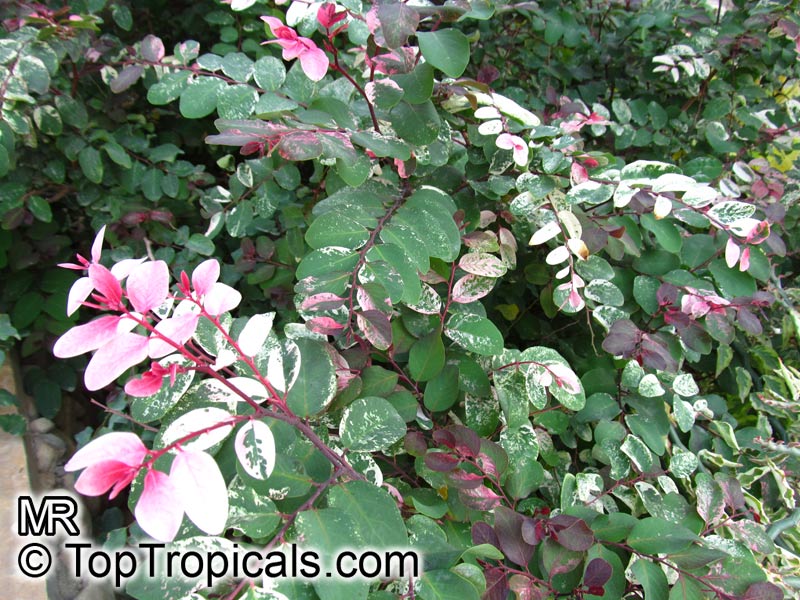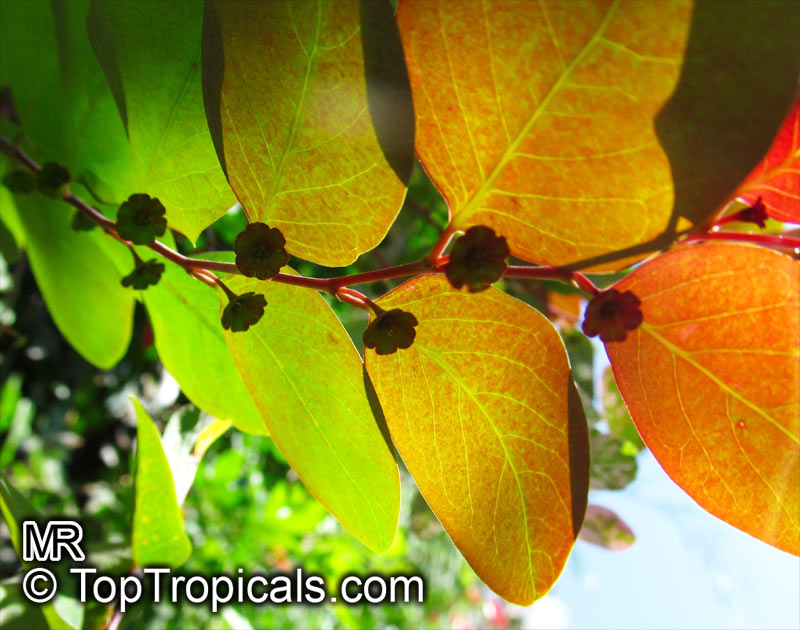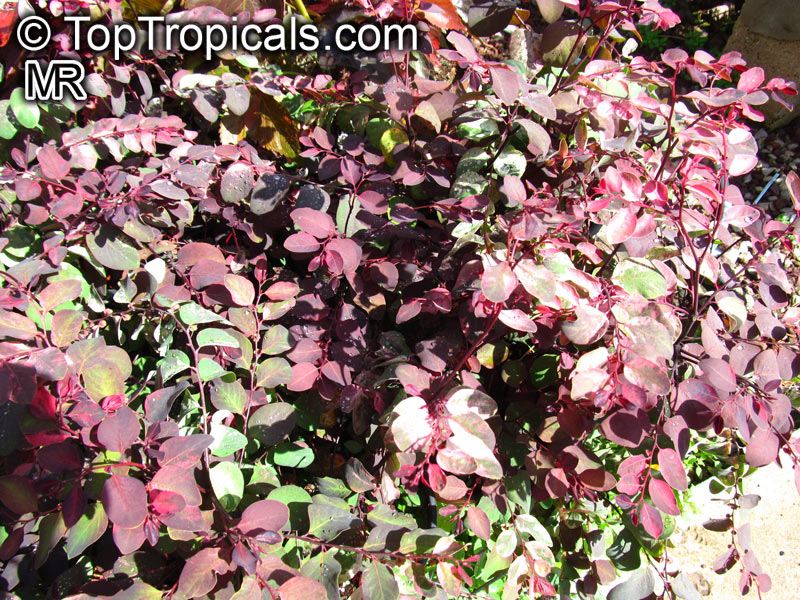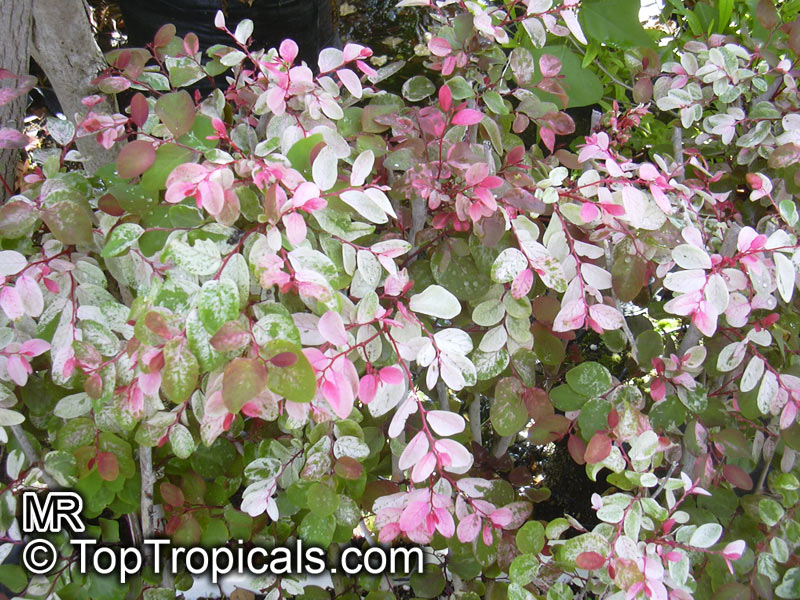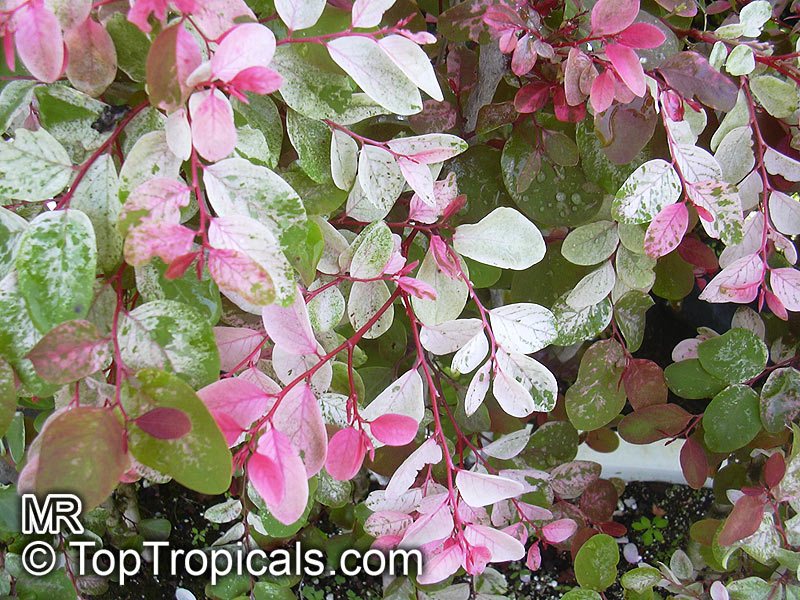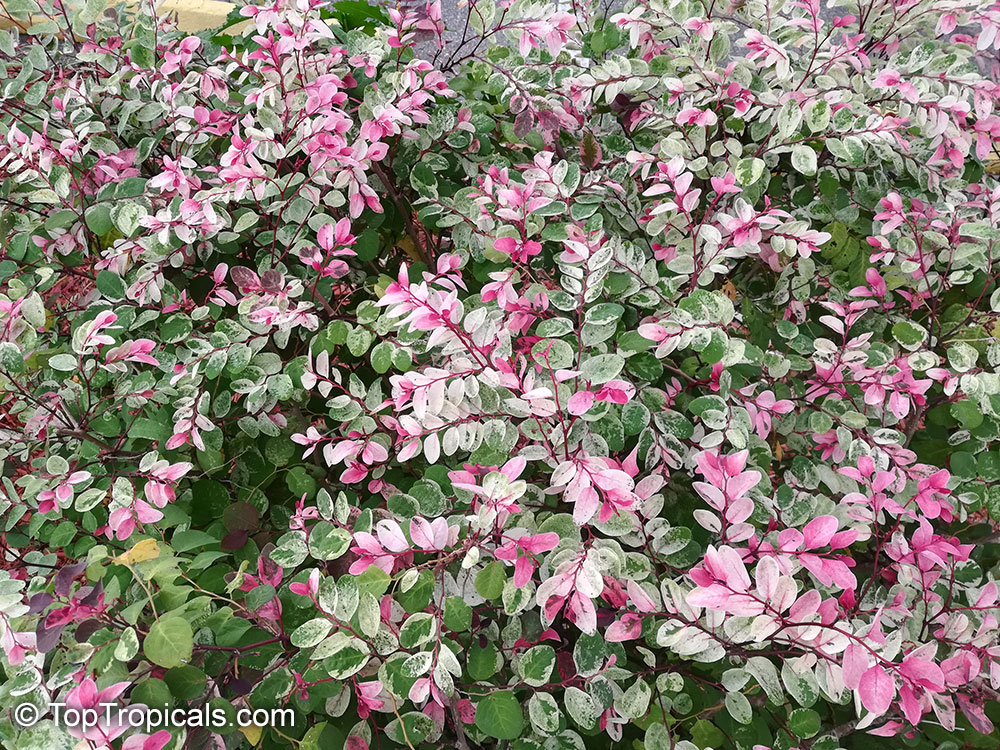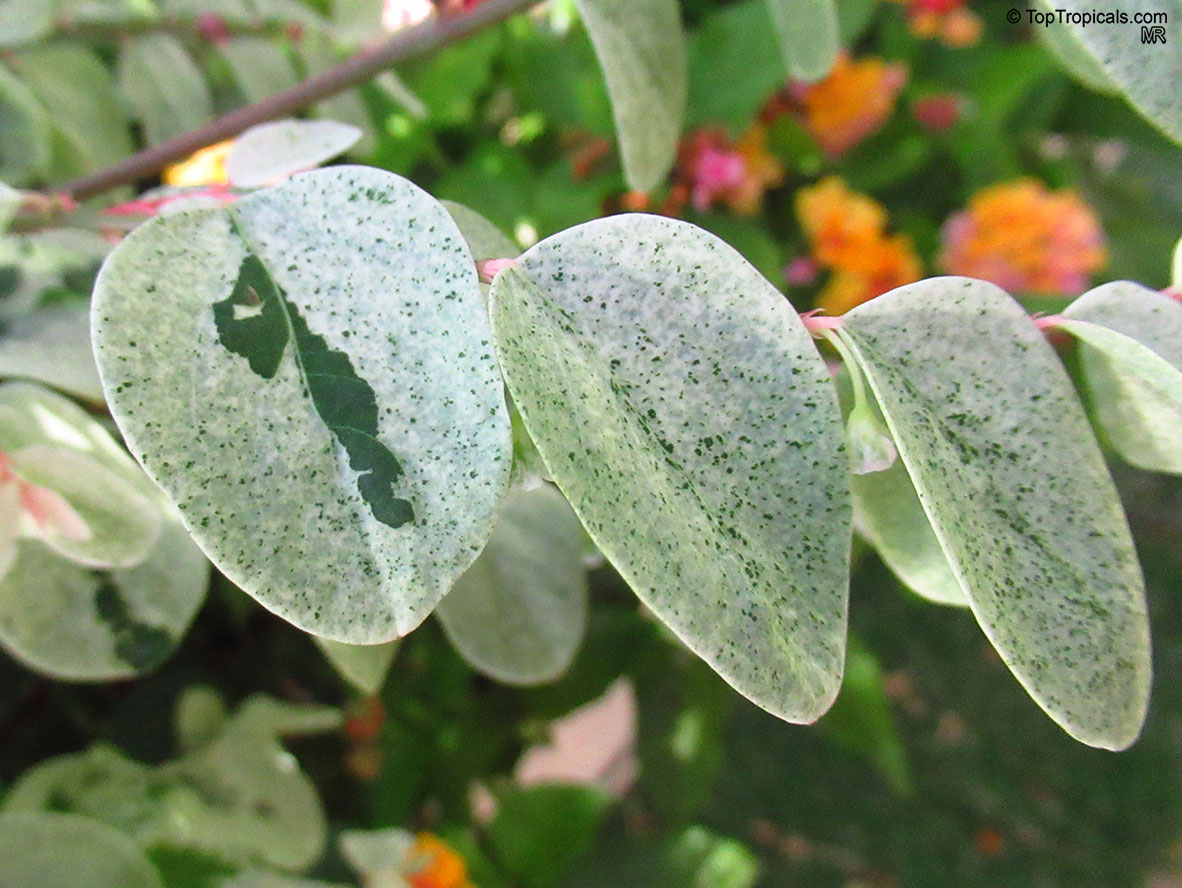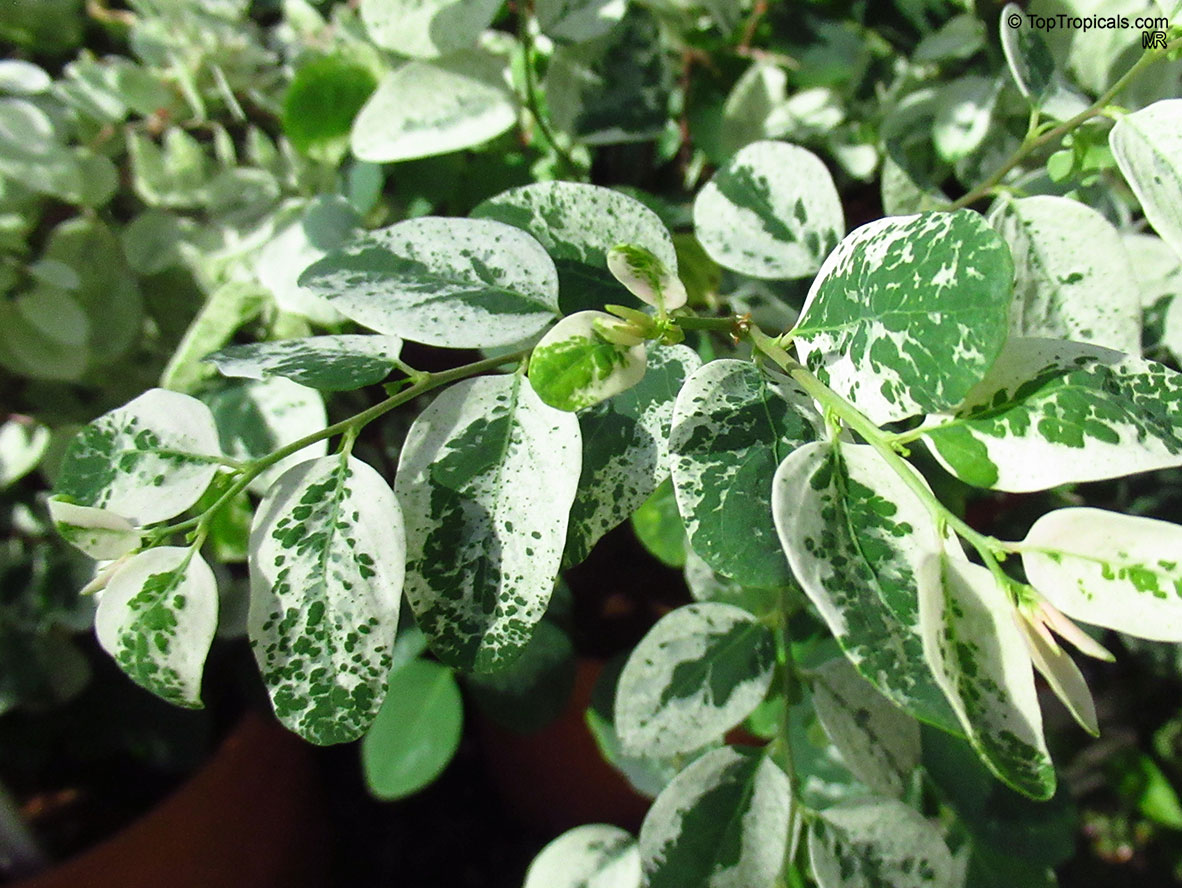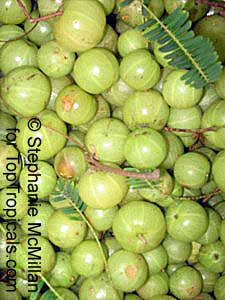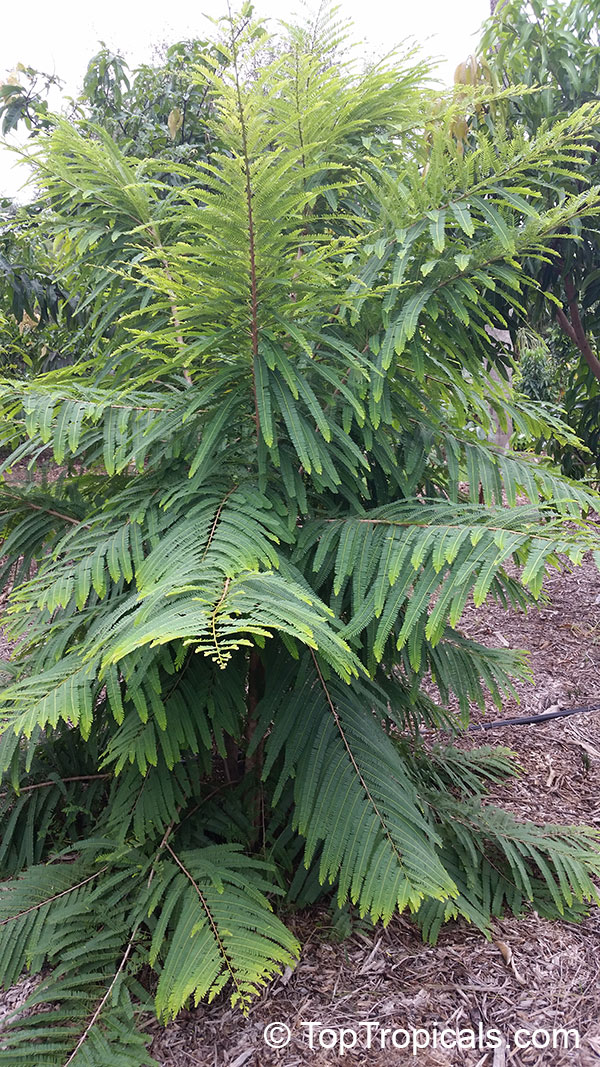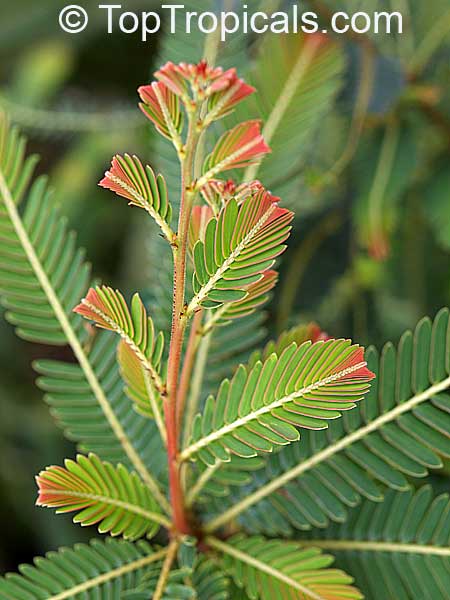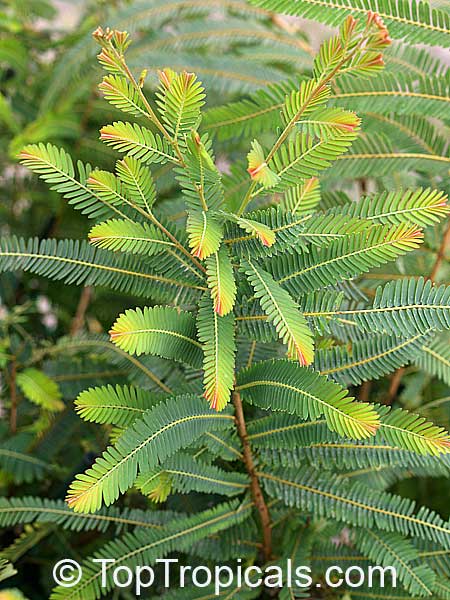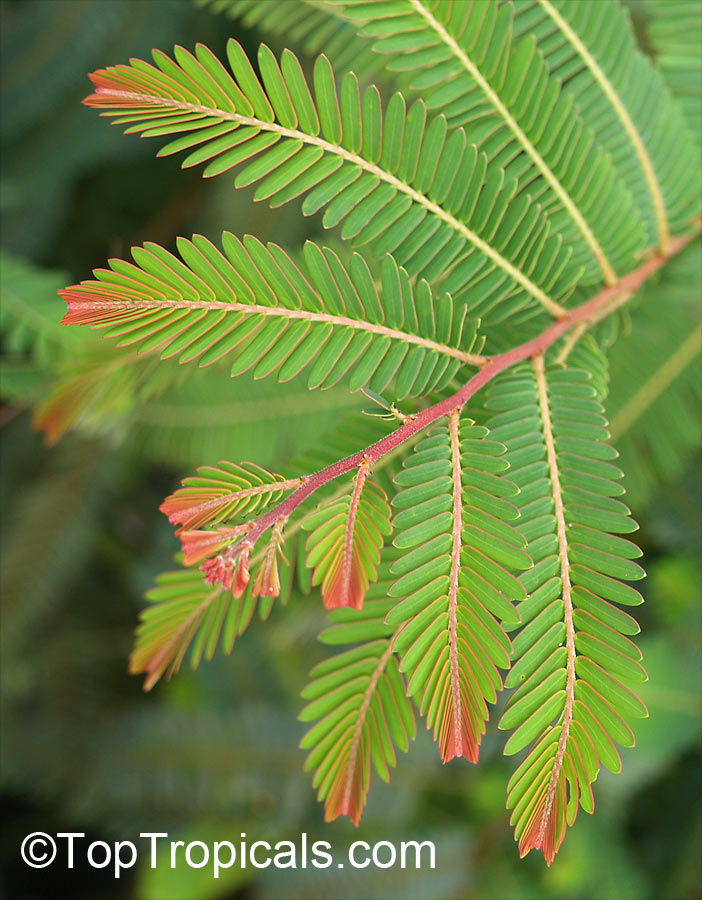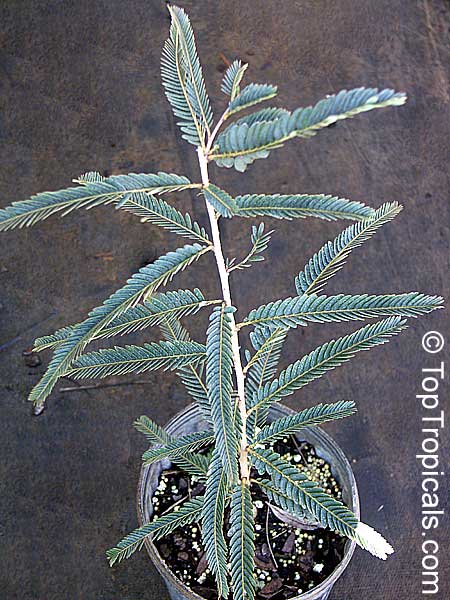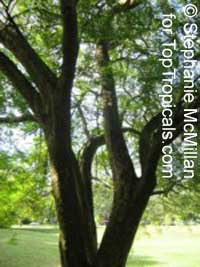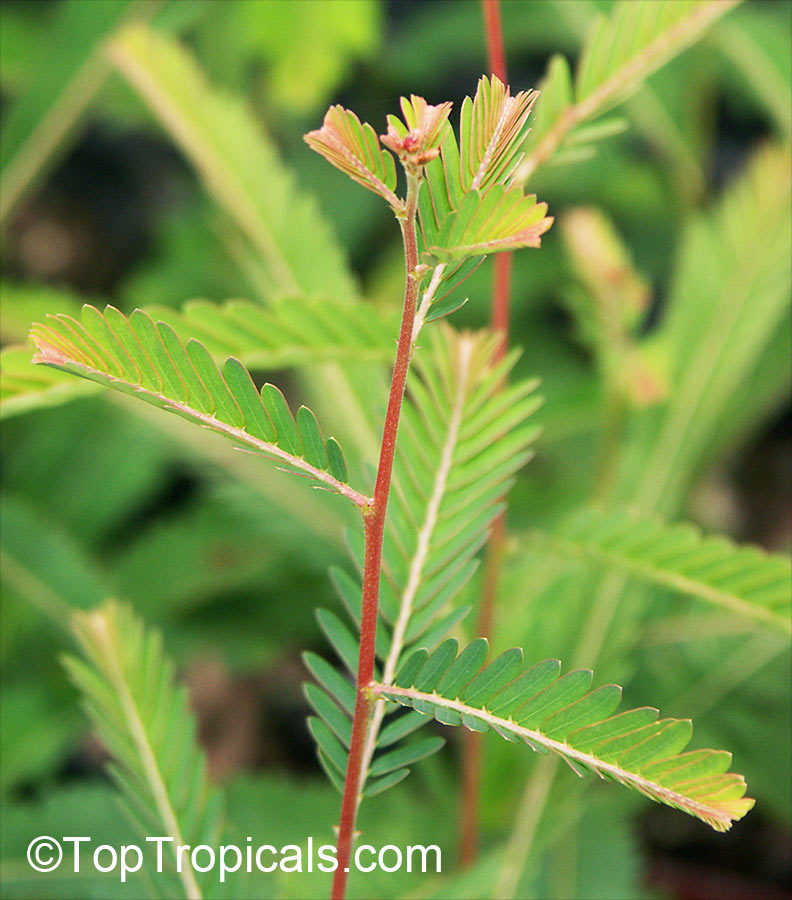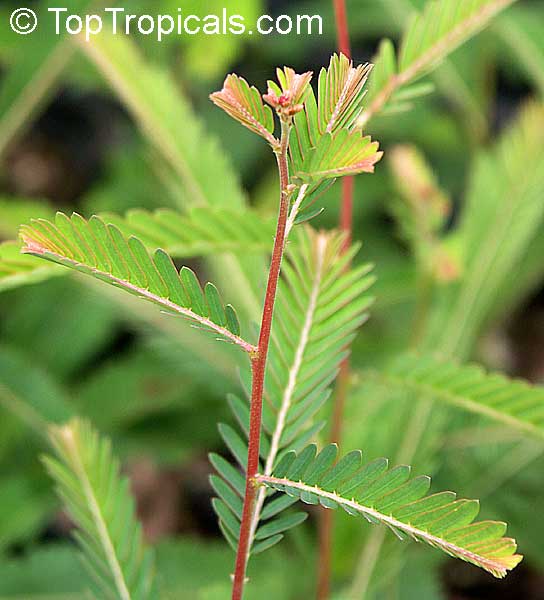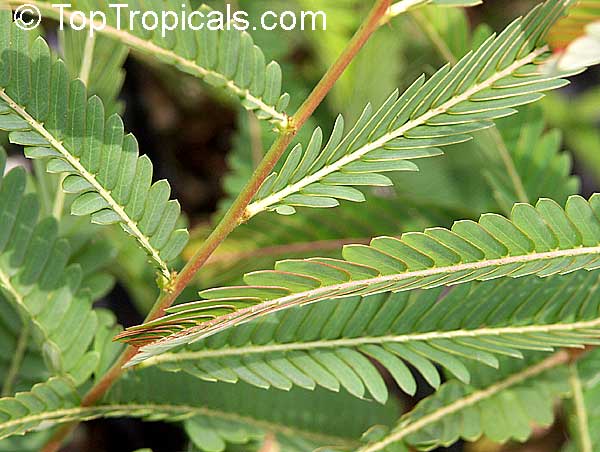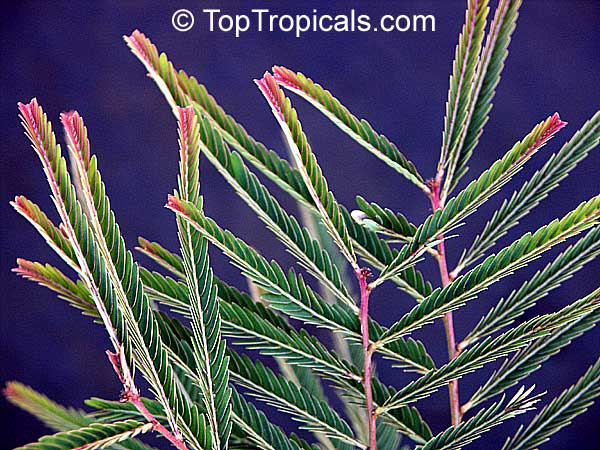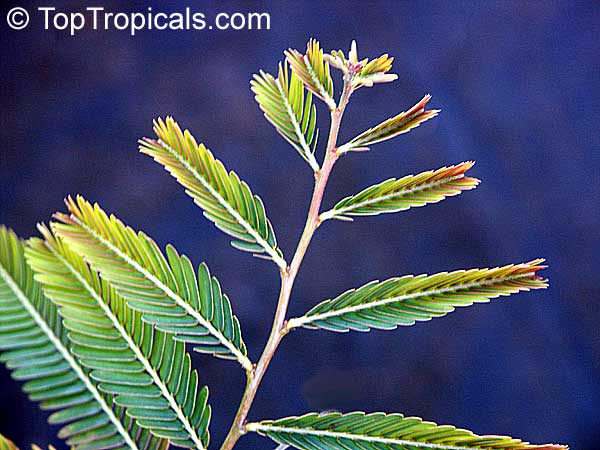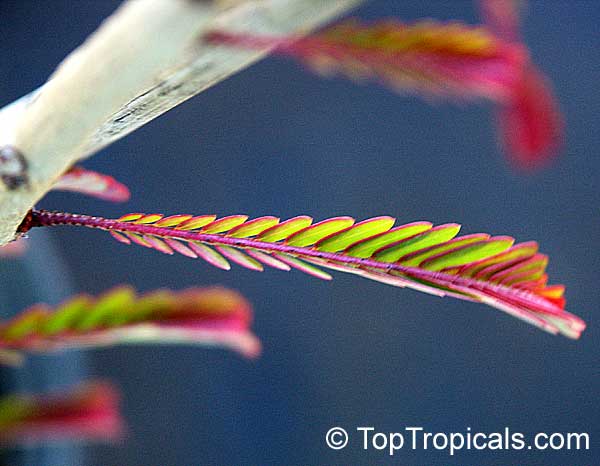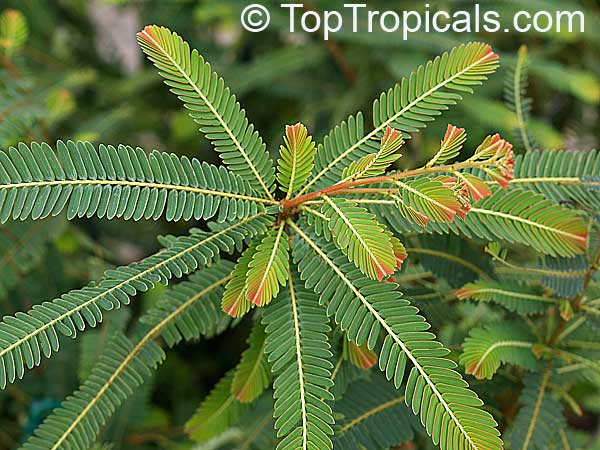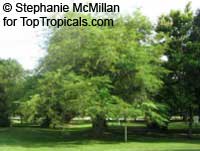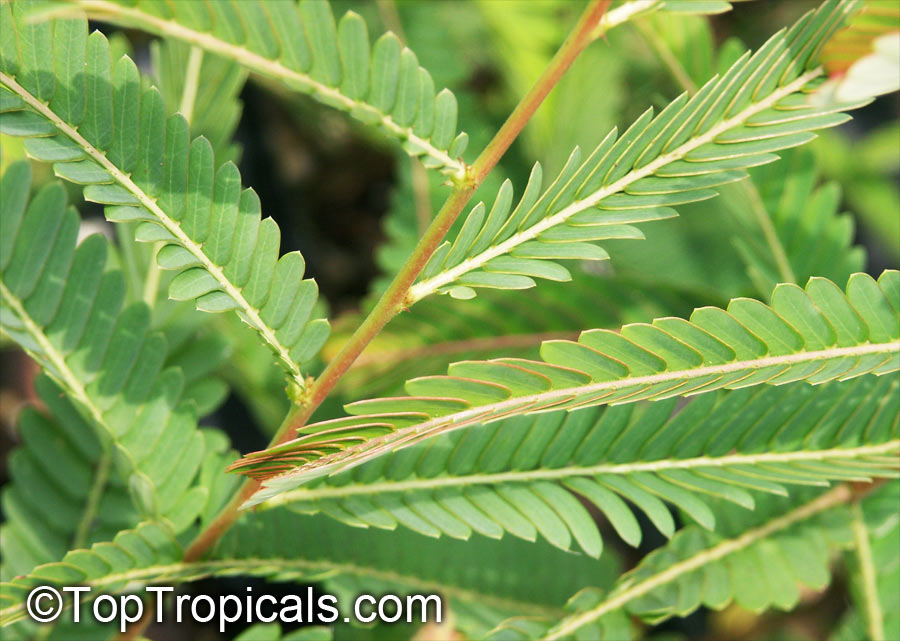Phyllanthaceae - Botanical Family
Top Tropicals Plant Encyclopedia
| Number of plants found: 24 | Next | 
|
Go to page: | 1 | 2 | 3 |
Botanical name: Antidesma bunius
Common names: Bignay, Bugnay, Tassel berry
Family: Phyllanthaceae
Origin: Malaysia






Antidesma bunius is a large shrub or small tree native to Malaysia. It grows in full sun or semi-shade, and requires regular watering when grown as a potted plant in cold regions. It is suitable for planting in USDA zones 9-11, and grows to between 5-10 feet when a shrub, and 10-20 feet when a small tree.
The fruits of Antidesma bunius are a great source of nutrients and are renowned for their health benefits. Each bush can produce 20-30 fruits per cluster during the months of July through September. The fruits appear in red, dark purple, and black colors, and they have a unique, slightly acidic flavor. These fruits are enjoyed by birds, and can be used to make jams, jellies, and vine, as well as other beverages. Although they are edible, the juices can stain fingers and clothing if not handled carefully.
Antidesma bunius is closely related to another species known as Antidesma platyphyllum, which produces larger fruits in either purple or black colors. These fruits are also enjoyed by birds and are edible for humans.
Overall, Antidesma bunius is a hardy and productive shrub or small tree with many beneficial health benefits. It is easy to grow and maintain and produces a large number of fruits from July through September. Because of this, it is a great addition to any garden.
Ordering seeds info
RECOMMENDED SUPPLIES:
Seed Germination Mix #3, professional grade
SUNSHINE-Epi - Seeds and cuttings booster
SUNSHINE Bombino - Young Plant Booster
Recommended Fertilizer: SUNSHINE C-Cibus - Crop Nutrition Booster
SUNSHINE-Honey - sugar booster
Botanical name: Baccaurea dulcis
Common names: Rambai, Kampuduang, Menteng
Family: Phyllanthaceae
Origin: Sumatra, Java






Baccaurea dulcis (Rambai) is an uncommon, small tree that is native to the low elevation rain forests of Sumatra and Java. It typically stands between 10 and 20 feet tall and thrives in full sun or semi-shade circumstances. Rambai requires an adequate amount of water on a regular basis in order to remain healthy; it prefers a soil that is rich and slightly on the acidic side. With proper care, this tree is adaptable to USDA Zones 10 through 11; however, it needs to be protected from cold weather and can be grown indoors or in greenhouses in colder climates.
Throughout its natural range, the Rambai is an ethnomedical plant that is used for various medicinal and edible purposes. It produces edible fruits that are swollen, spherical and approximately two inches in diameter. These fruits ripen to a bright orange color and develop a sweet and tart flavor over several weeks. It is important to note that if the fruit is still tart, it is not yet ripe. The tree is also known for its large edible seeds, which can be cooked and consumed as a nutritious snack.
Botanical name: Baccaurea parviflora
Common name: Wild Rambai
Family: Phyllanthaceae
Origin: Indochina, Malesia






Botanical name: Baccaurea polyneura
Common name: Tampoi
Family: Phyllanthaceae
Origin: Southeast Asia





Botanical name: Baccaurea reticulata
Common name: Lesser Tampoi
Family: Phyllanthaceae
Origin: Malay Peninsula, Kalimantan







Botanical names: Bischofia javanica, Andrachne apetala, Andrachne trifoliata, Bischofia cummingiana
Common names: Bishop Wood, Javawood, Toog Tree, Java Cedar
Family: Phyllanthaceae
Origin: Southeast Asia
Hardiness: 30°F








The tree is used for reforestation and is often intercropped in traditional agriculture. In India, it is considered to be an excellent shade tree in coffee and cardamom plantations
Young soft leaves - eaten as a vegetable.
Botanical names: Breynia androgyna, Sauropus androgynus
Common names: Katuk, Star Gooseberry, Sweet Leaf, Tropical Asparagus, Chang Kok, Manis, Nutty Leaf, Rau Ngot
Family: Phyllanthaceae
Origin: India









Sauropus androgynus is a shrub grown in some tropical regions as a leaf vegetable. In Chinese it is called mani cai, in Malay it is called cekur manis or sayur manis, and in Vietnamese, it is called rau ngot.
Its multiple upright stems can reach 6-7 ft high and bear dark green oval leaves 2-3" long.
It is one of the most popular leaf vegetables in South Asia and Southeast Asia and is notable for high yields and palatability. The shoot tips have been sold as tropical asparagus. In Vietnam, people cook it with crab meat, minced pork or dried shrimp to make soup. In Malaysia, it is commonly stir-fried with egg and dried achovies. It is among only a few flora containing vitamin K.
It is a popular vegetable cultivated in India, Malaysia, Indonesia, southwest China. Delicious young shoots!
Recommended Fertilizer: SUNSHINE Robusta - Rapid Growth Booster
Recommended Fertilizer: SUNSHINE Robusta - Rapid Growth Booster
Botanical names: Breynia disticha, Breynia nivosa
Common names: Snow Bush, Hawaiian-Leaf Flower, Sweet Pea Bush, Calico Plant, Snow on the Mountain
Family: Phyllanthaceae
Origin: Pacific Islands
Hardiness: 25°F








Snowbush is a rounded shrub that is used primarily for its attractive foliage. It has mall, mottled, multi-colored variegated leaves with white, green and red coloration leaves. Plants appear to differ in foliage coloration with some showing almost whitish new growth and others with a white and green variegation. New growth displays the color. Keep trimmed to promote color and fullness. Does spred by underground runners.
Botanical names: Emblica officinalis, Phyllanthus emblica
Common names: Indian Gooseberry, Emblic Myrobalan, Amla, Amalaki, Amloki
Family: Phyllanthaceae
Origin: Northern and South Western India





Small to medium in size tree. The leaves are lacy, giving the tree a delicate look. Amla fruit paste is a major ingredient of Chavyanprash, a popular Ayurvedic tonic. Amla is known as amritphala in Sanskrit, which literally means the fruit of heaven or nectar fruit. It is so called because it is rich in many desirable properties. It was described in a 7th century Ayurvedic medical text. According to several scholars, the sage Chyawan is reputed to have restored his vitality with this fruit. The fruit is Aperient, Carminative, Diuretic, Aphrodasiac, Laxative, Astringent and Refrigerant; is useful in anaemia, jaundice, dyspepcia, haemorrhage disorders, diabetes, asthama and bronchitis. It cures insomnia and is healthy for hair. It is the richest known source of vitamin C. The fruit tastes bitter, but if you drink water after eating it, the water tastes sweet.
| Next |  |
Use link to repeat this search:
https://toptropicals.com/cgi-bin/garden_catalog/cat.cgi?search_op=and&keyword_op=and&language=e&family=Phyllanthaceae
&number=10&no_change_lang=1&user=tt&sale=1&first=0
